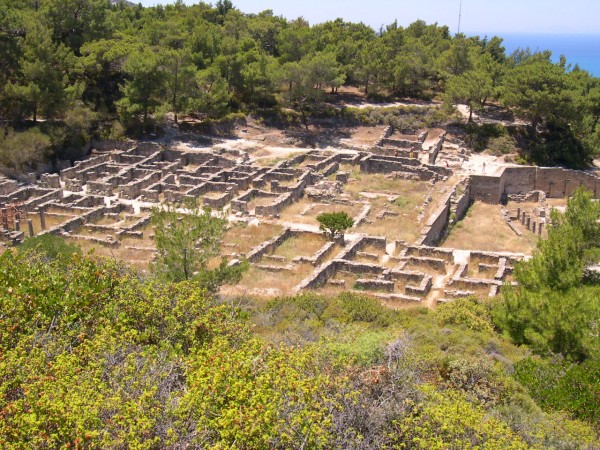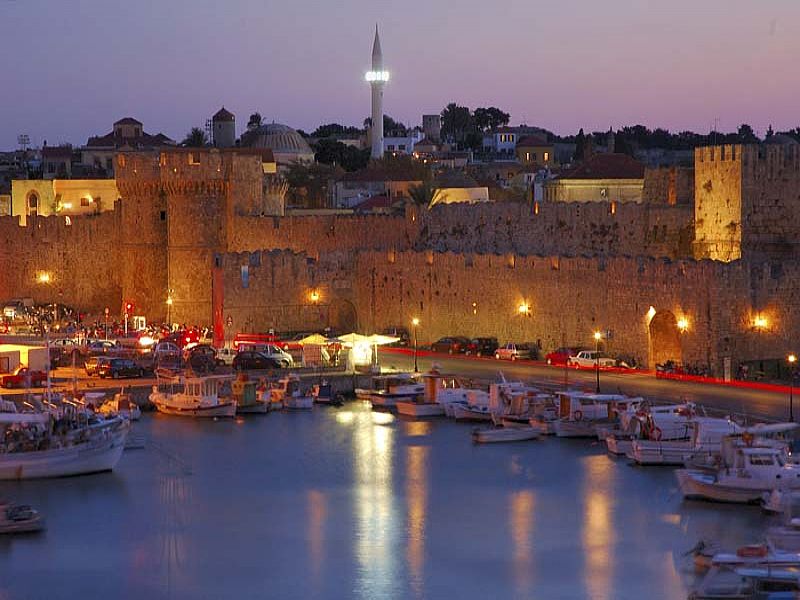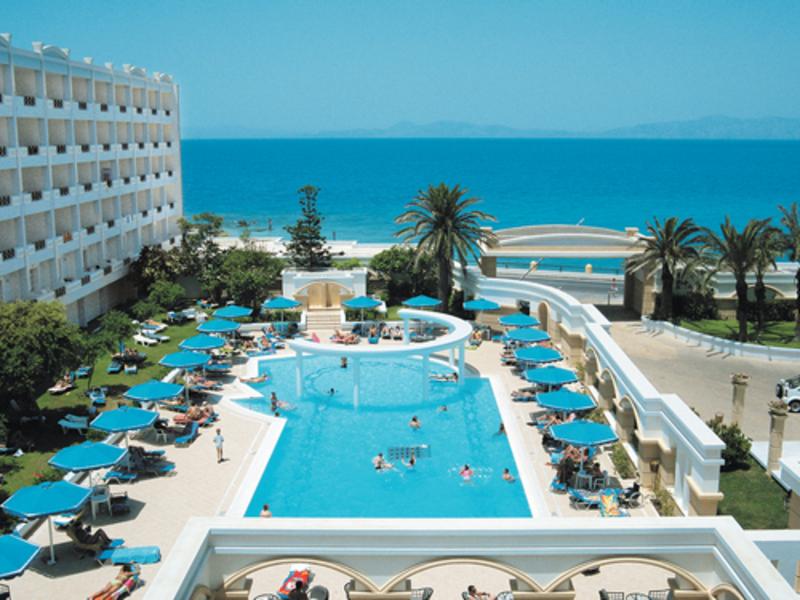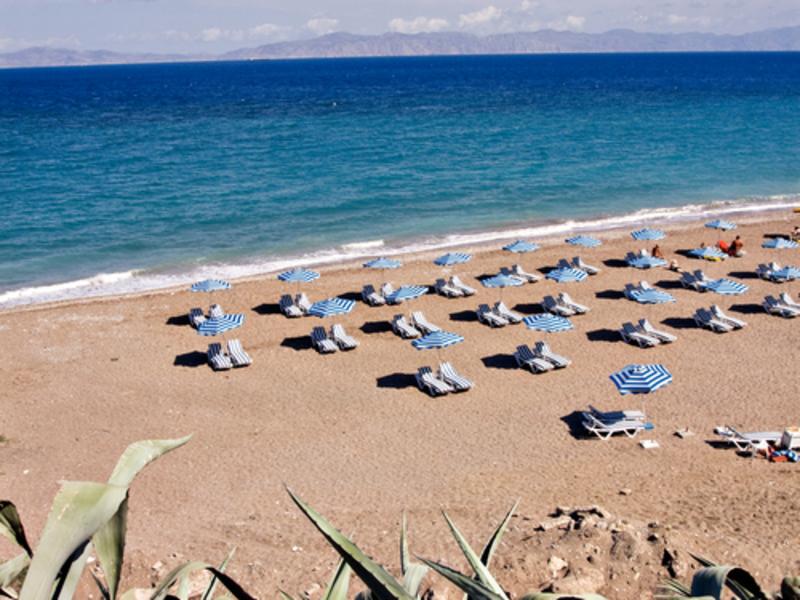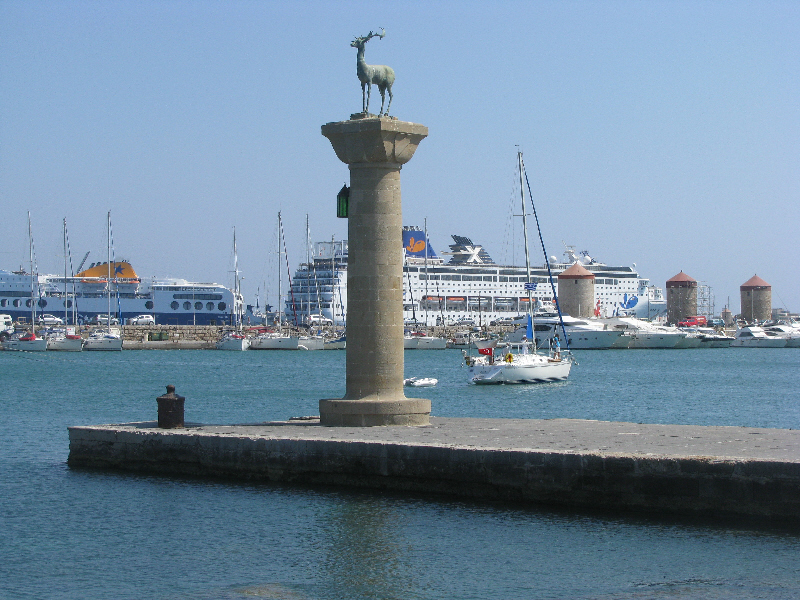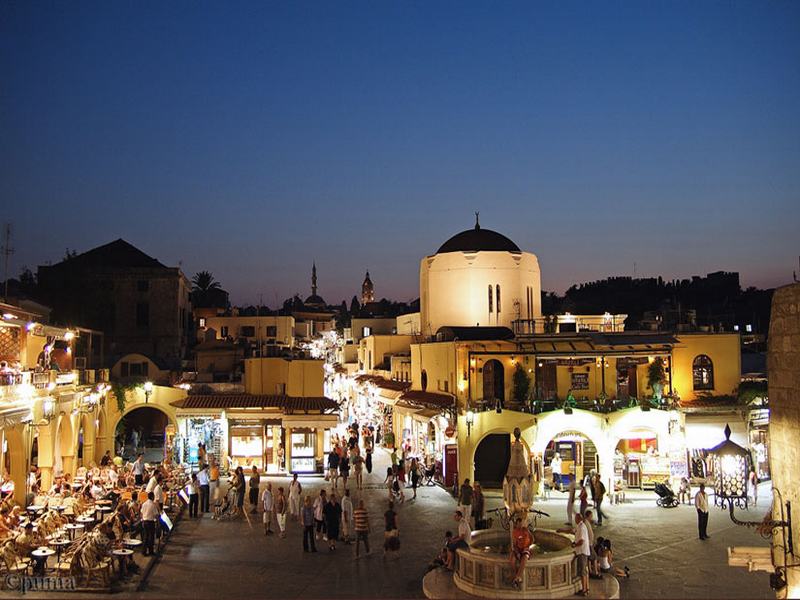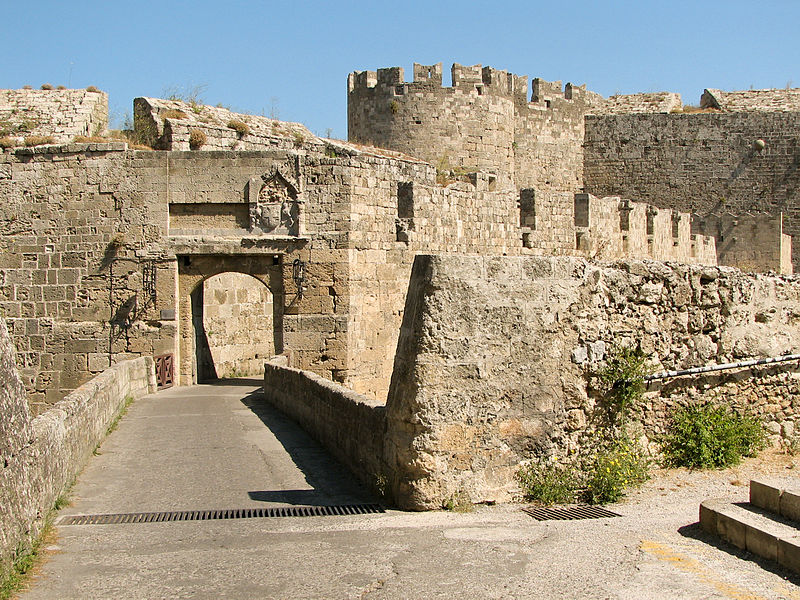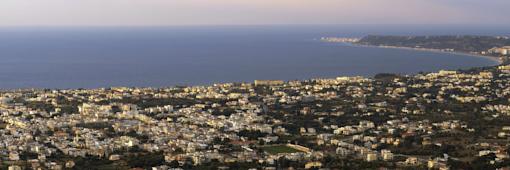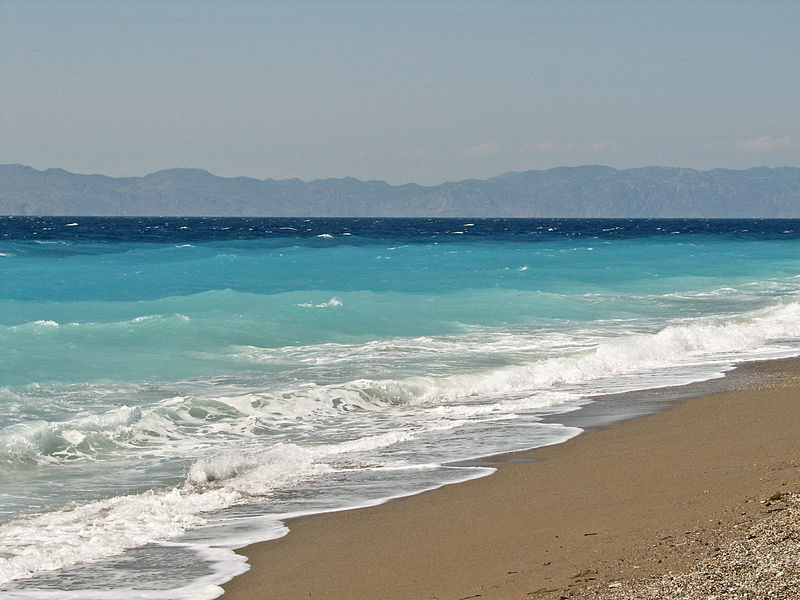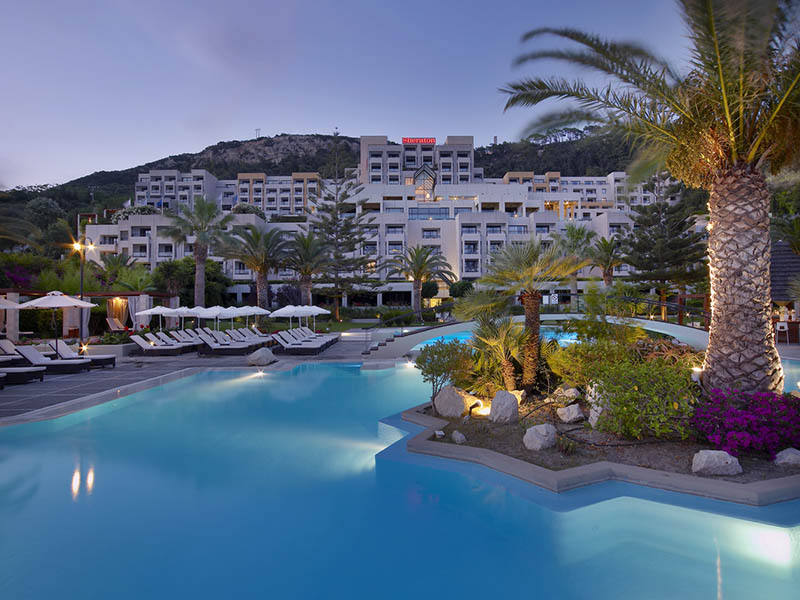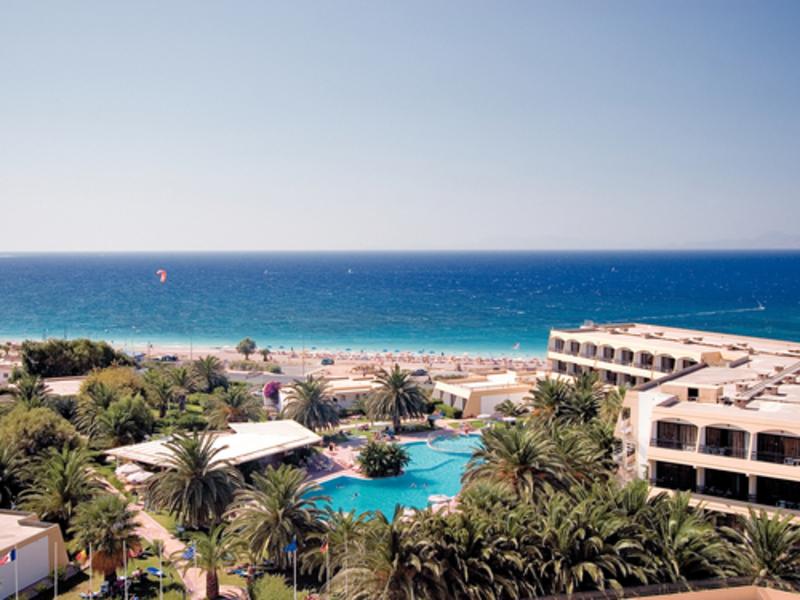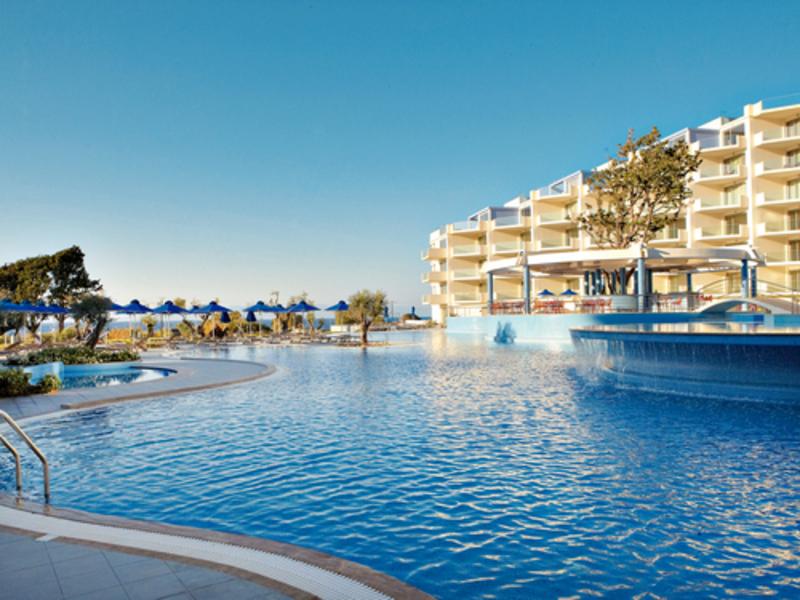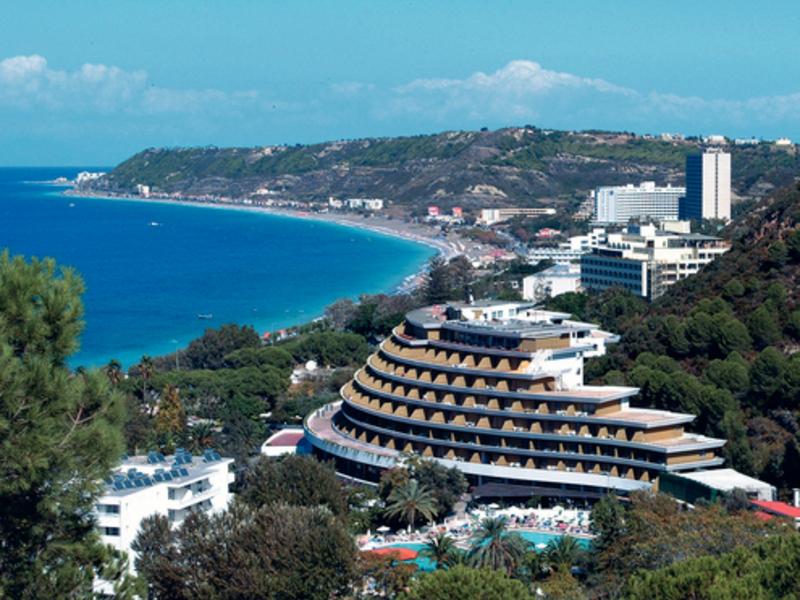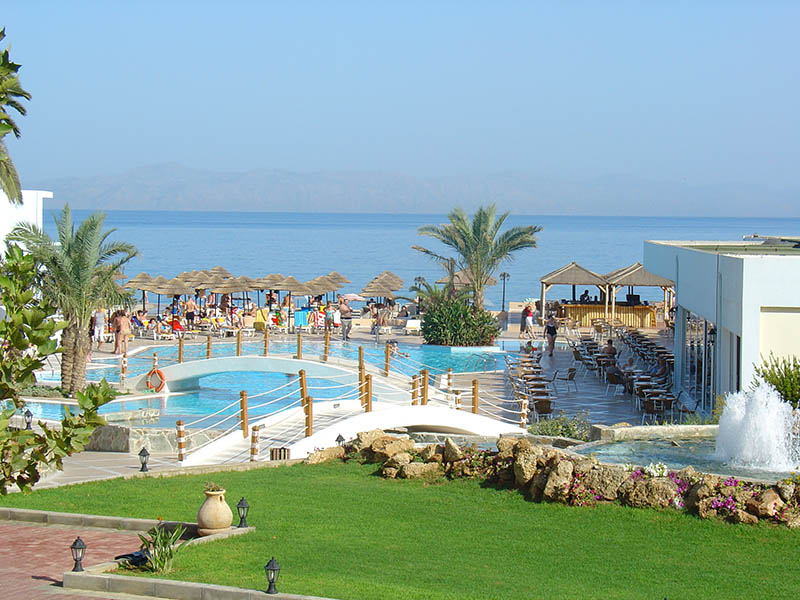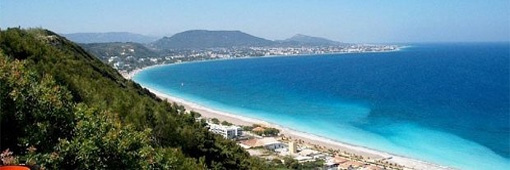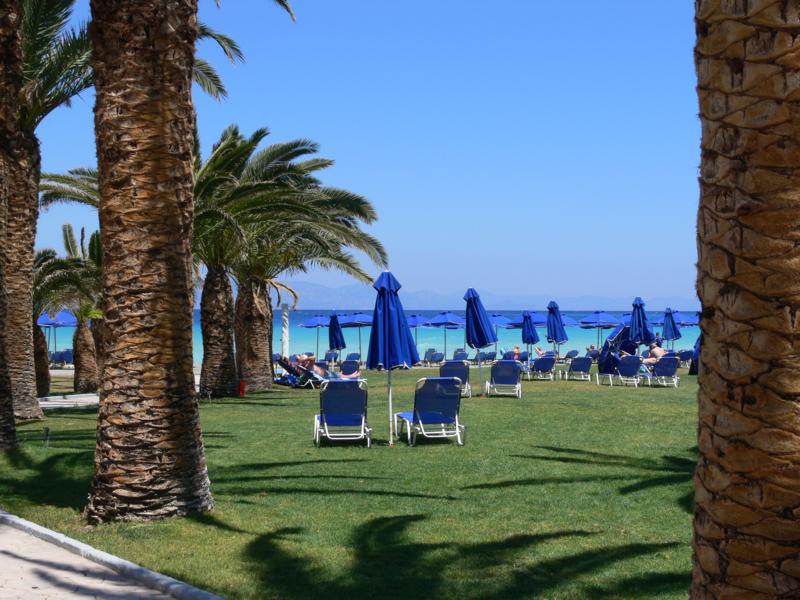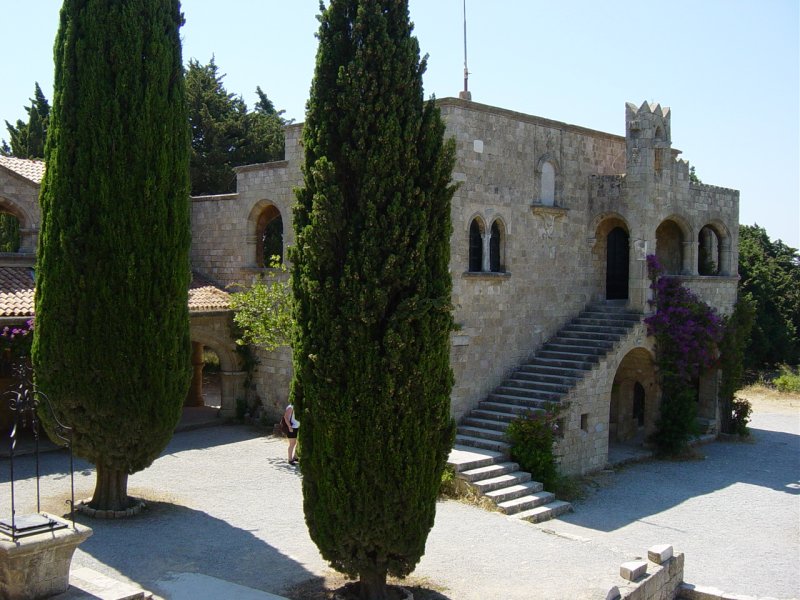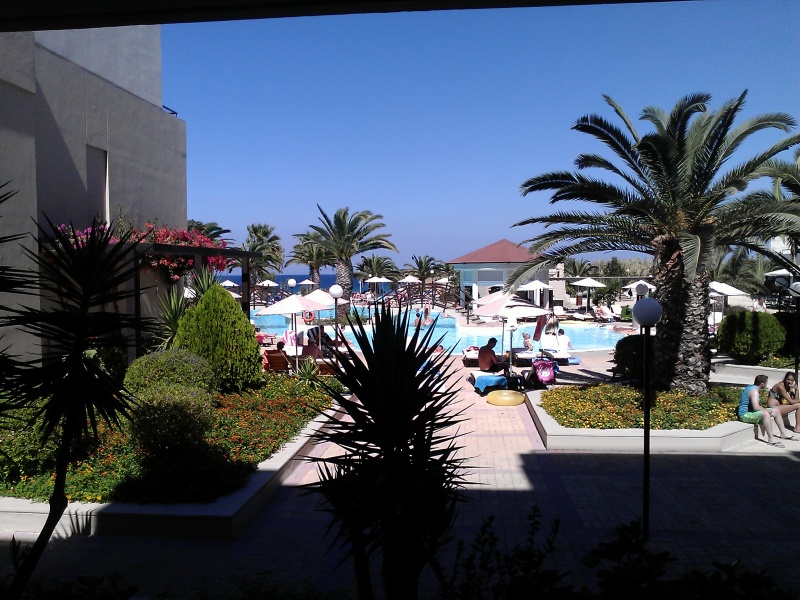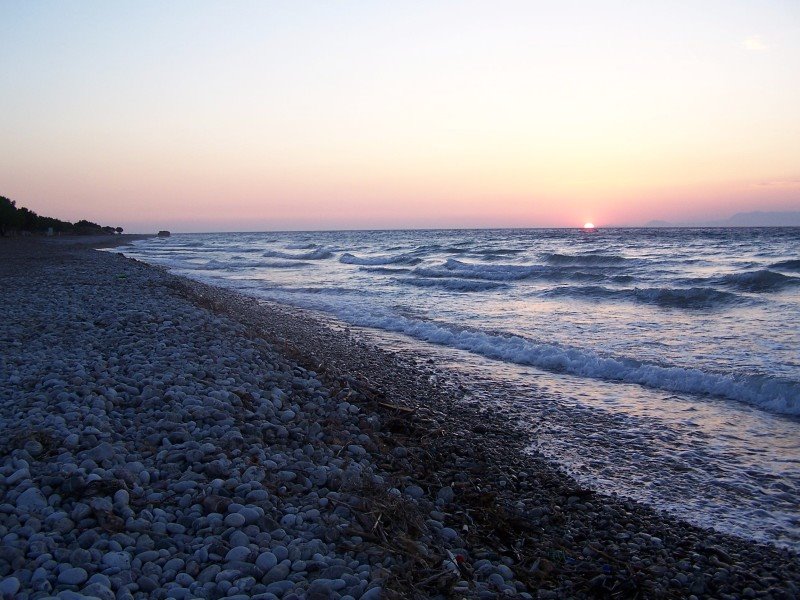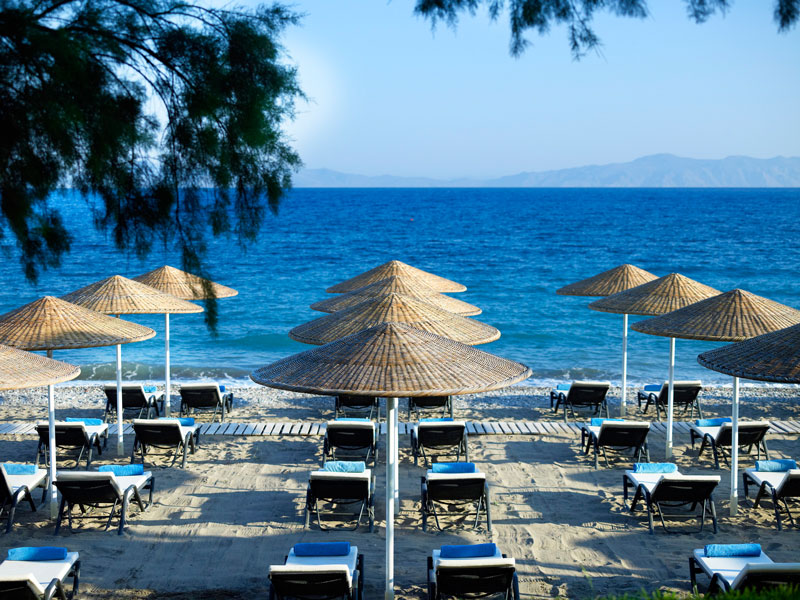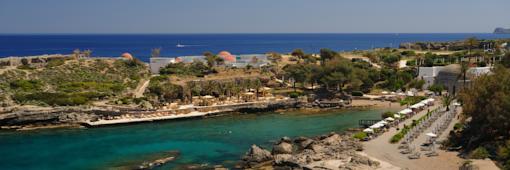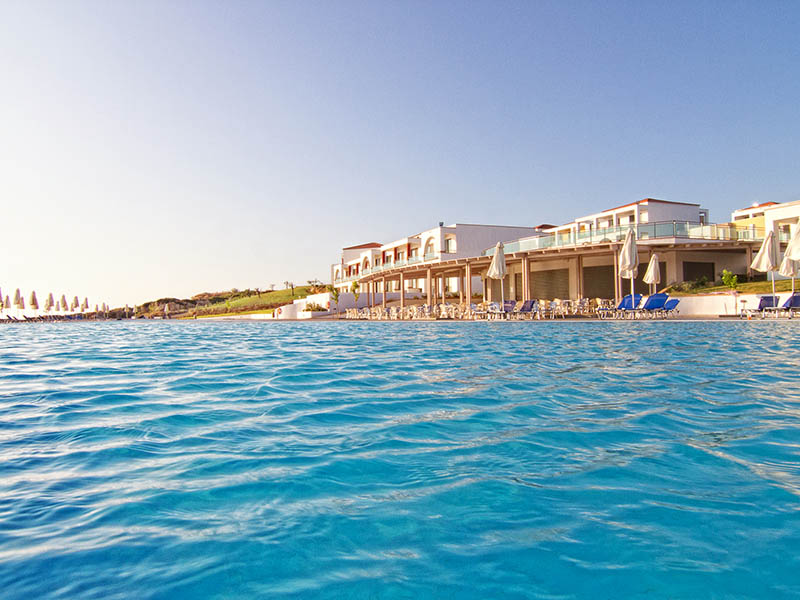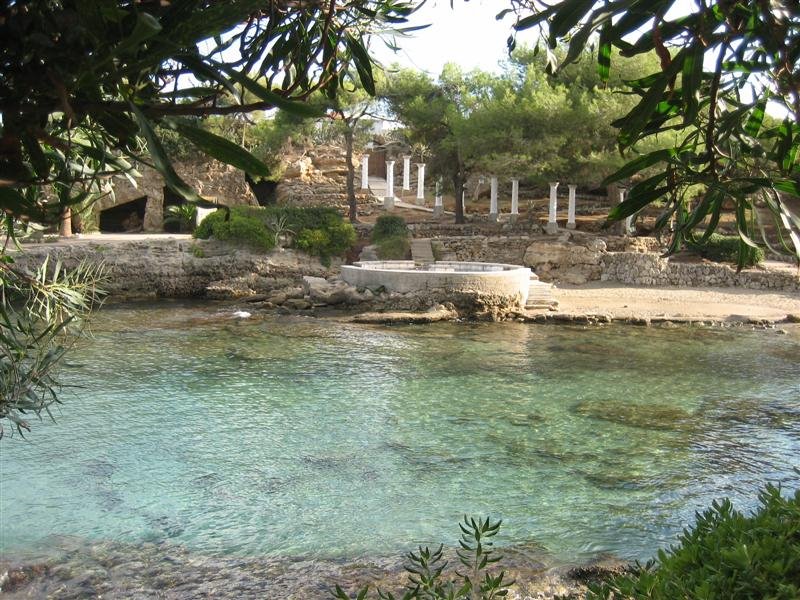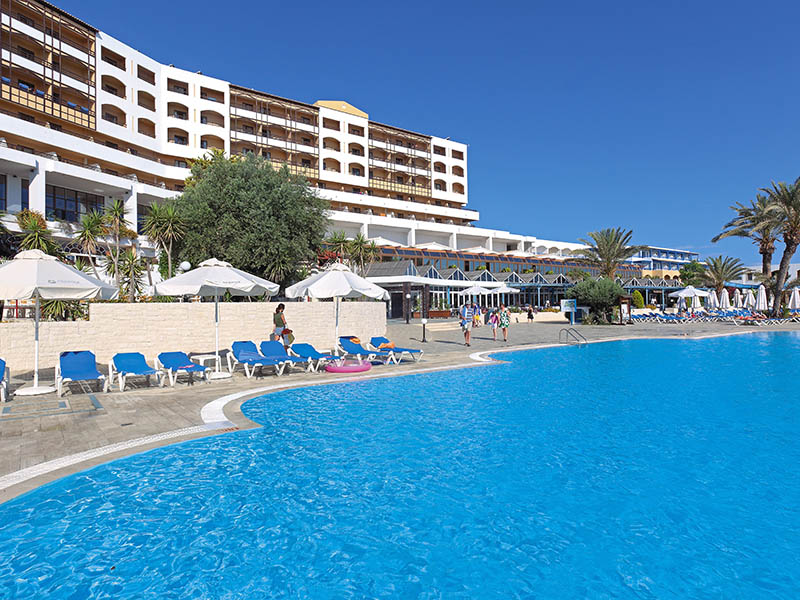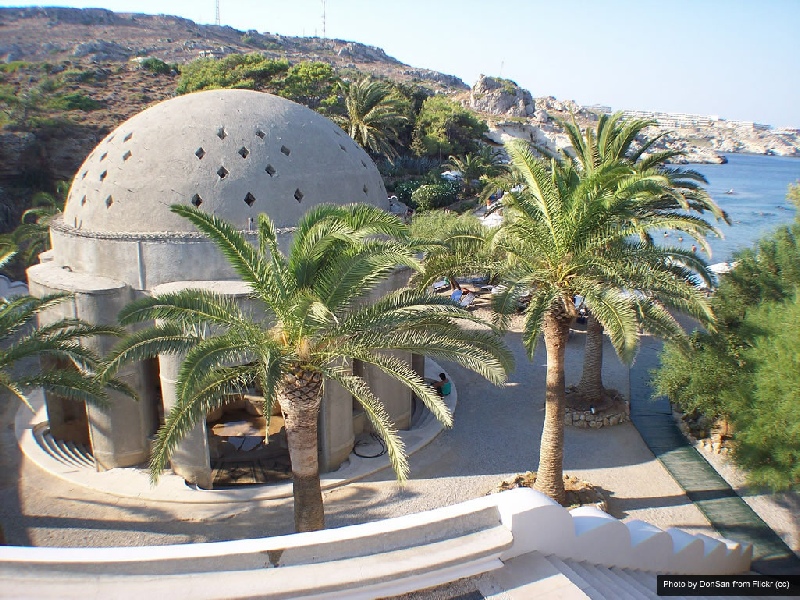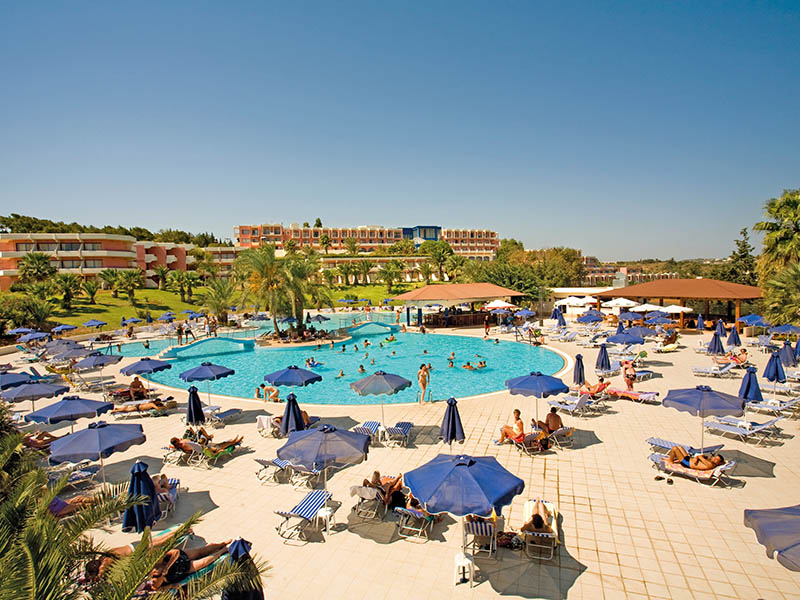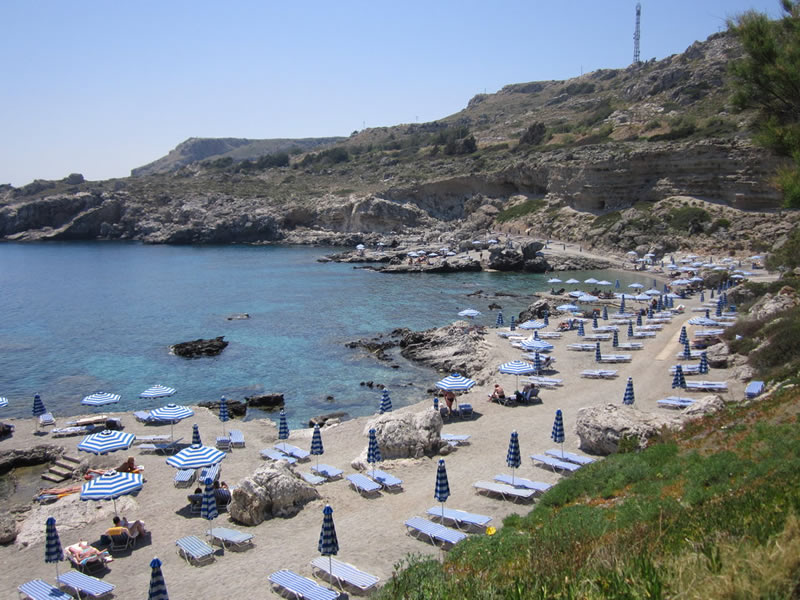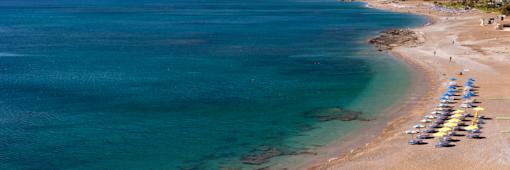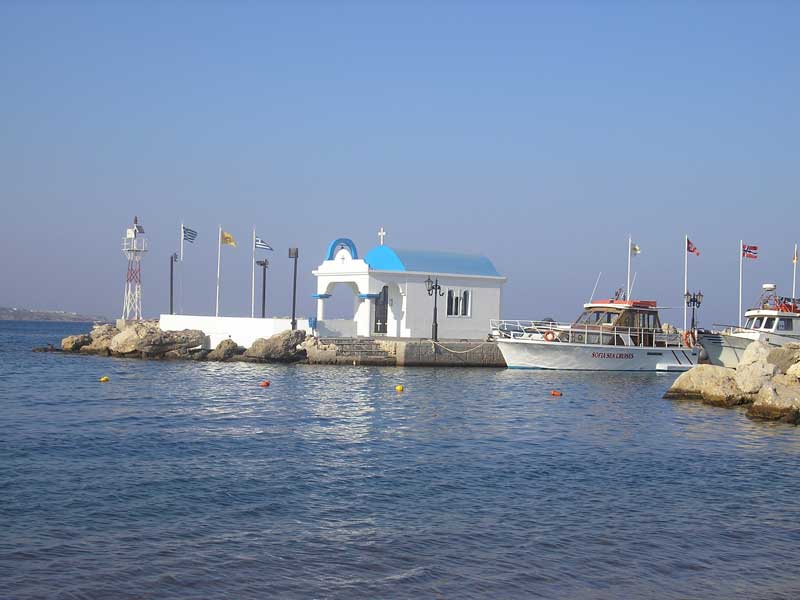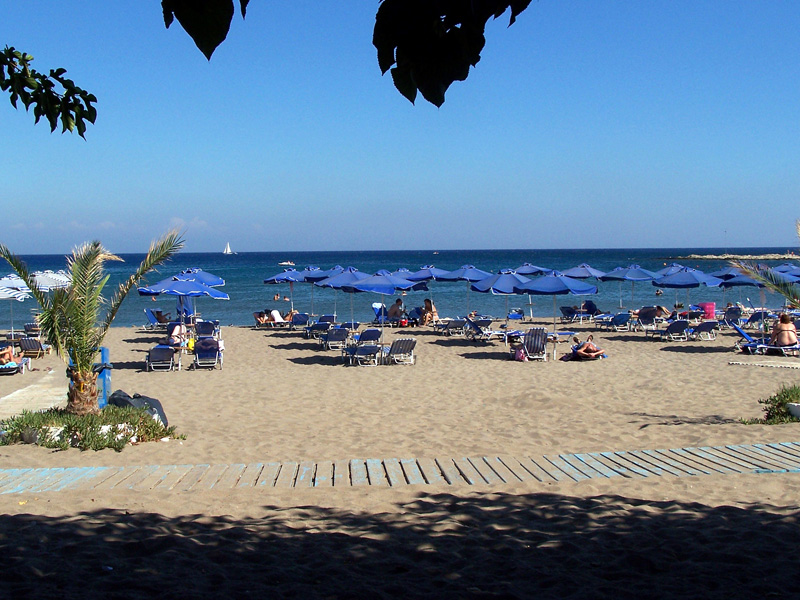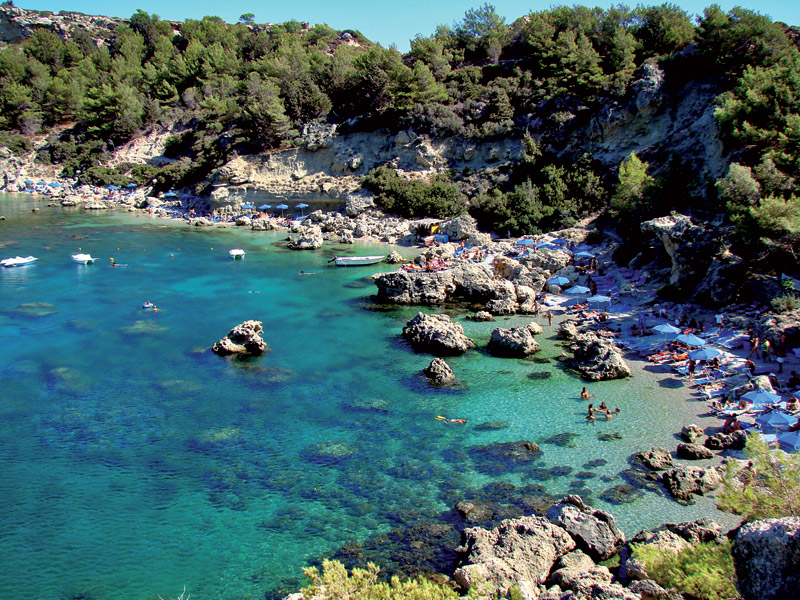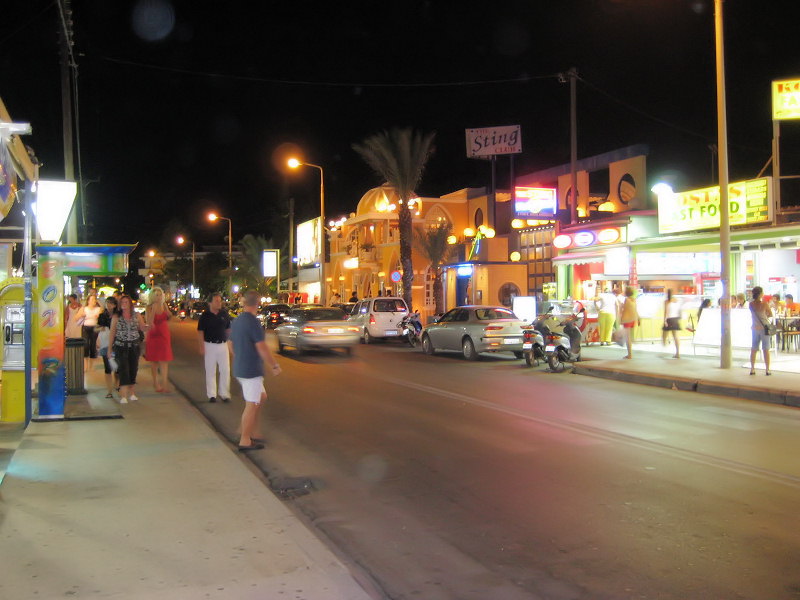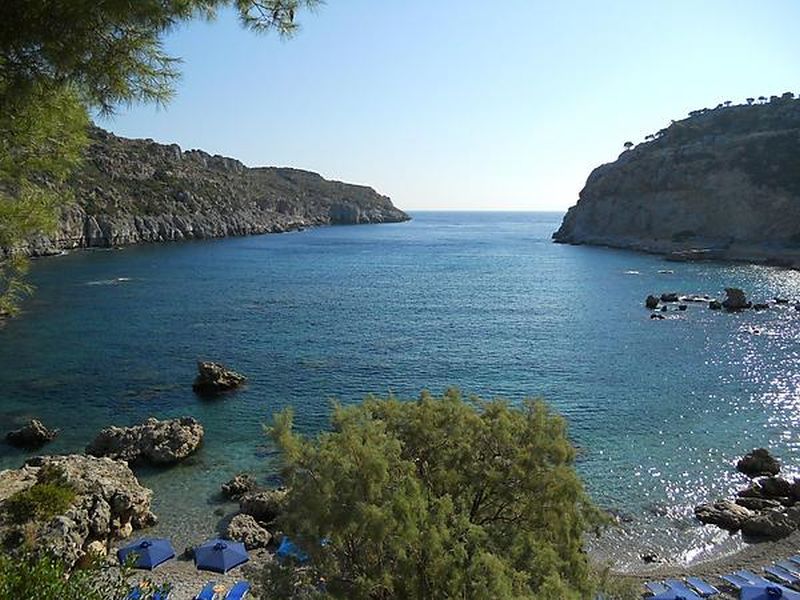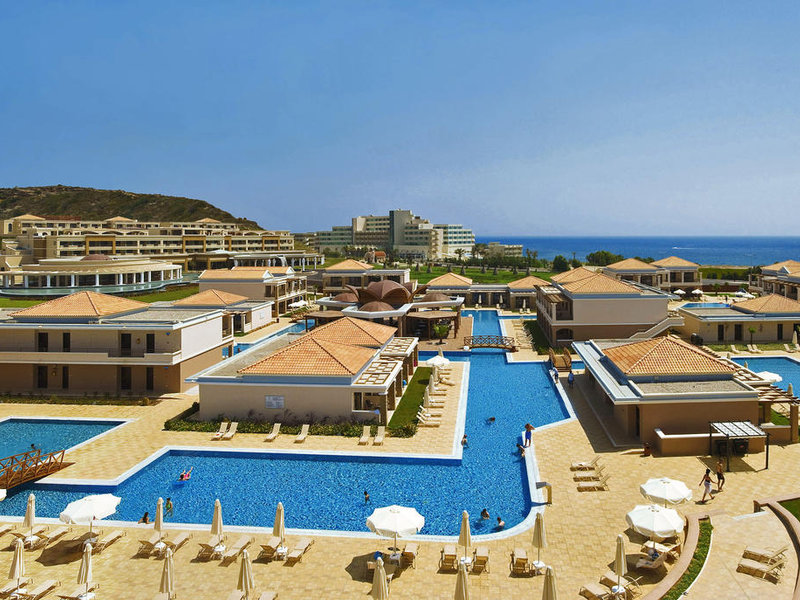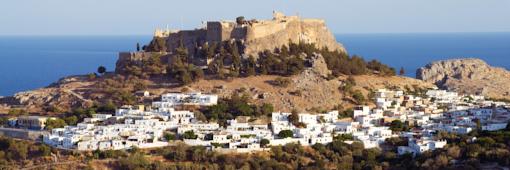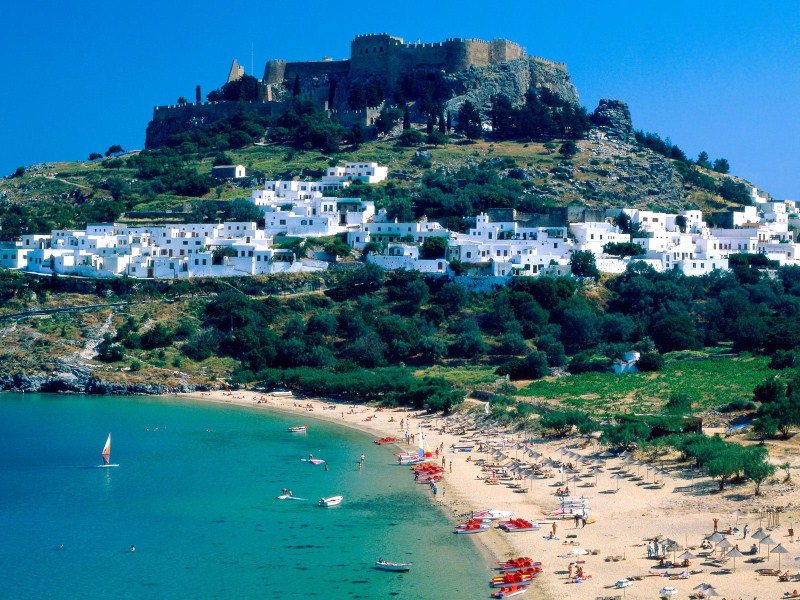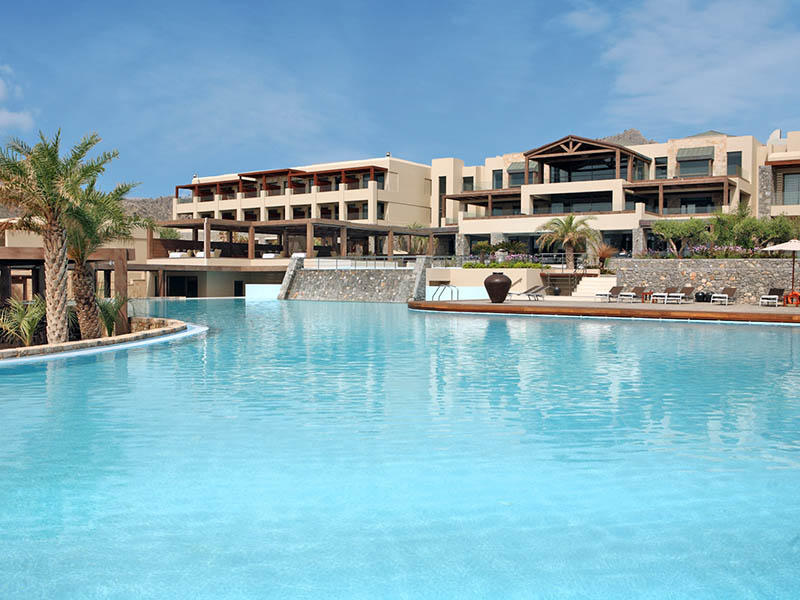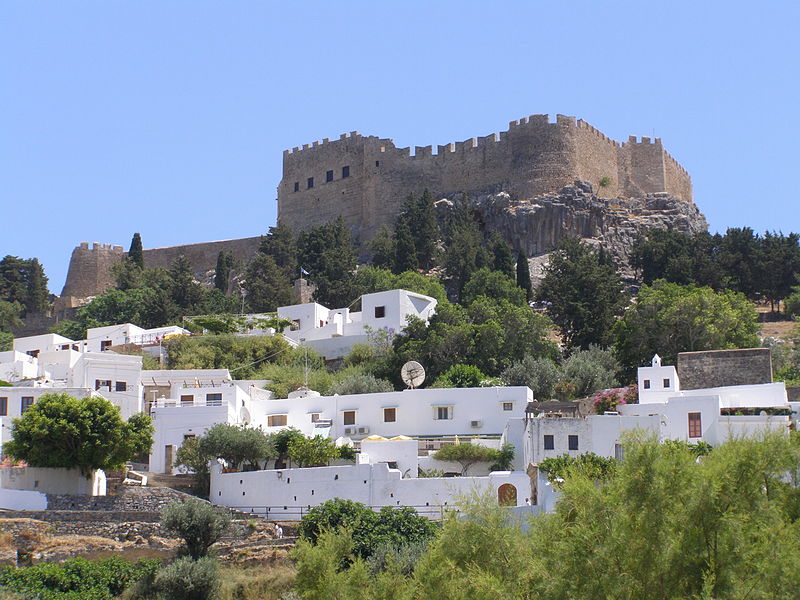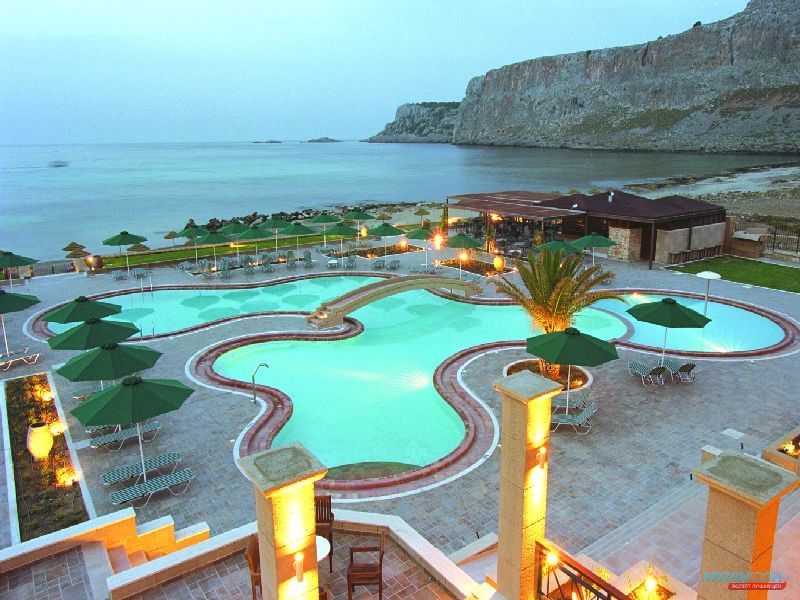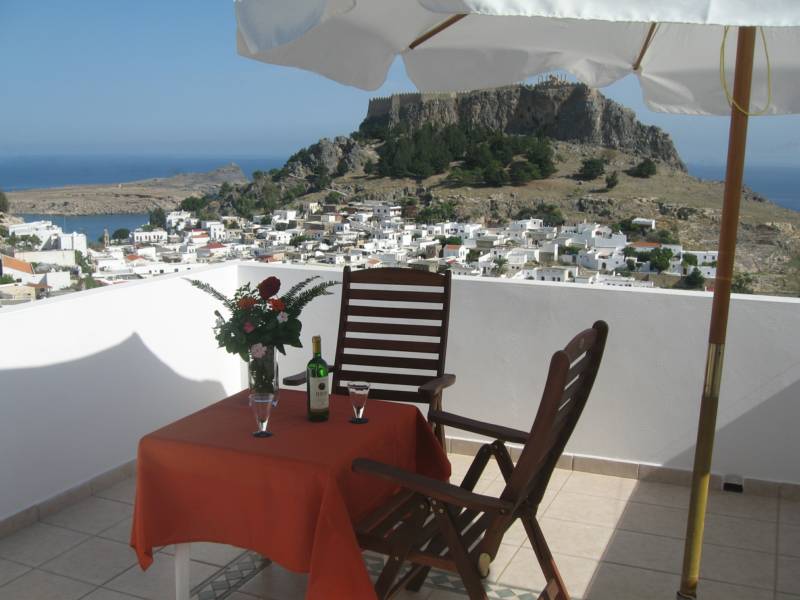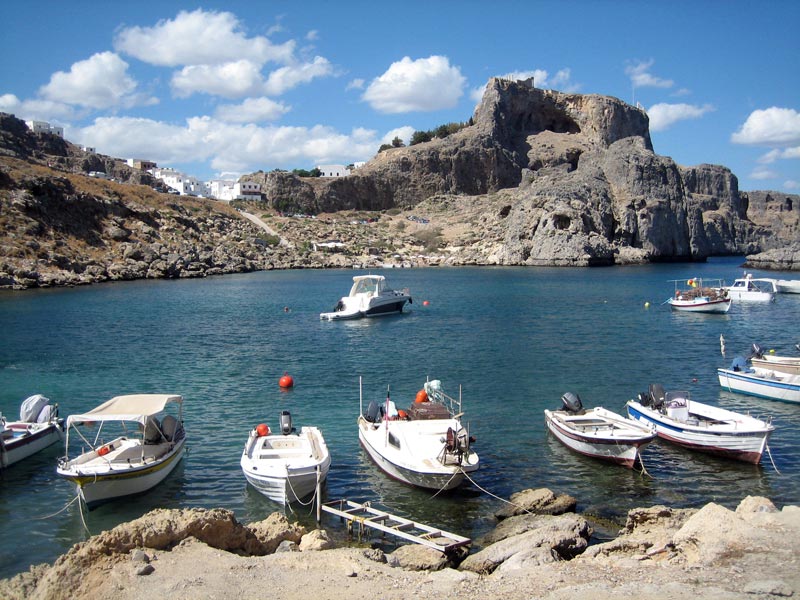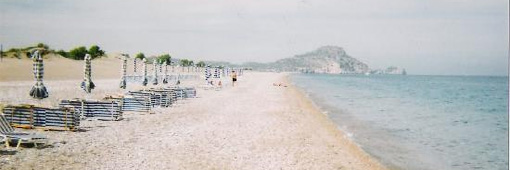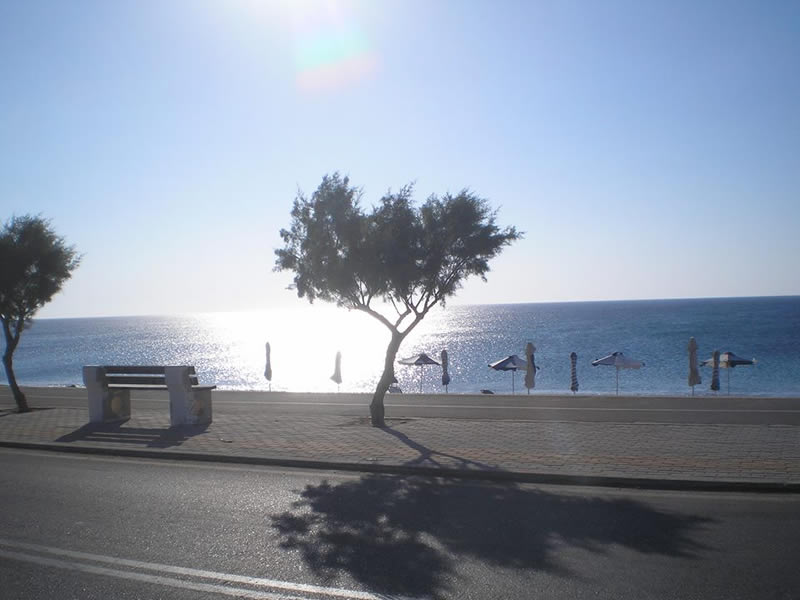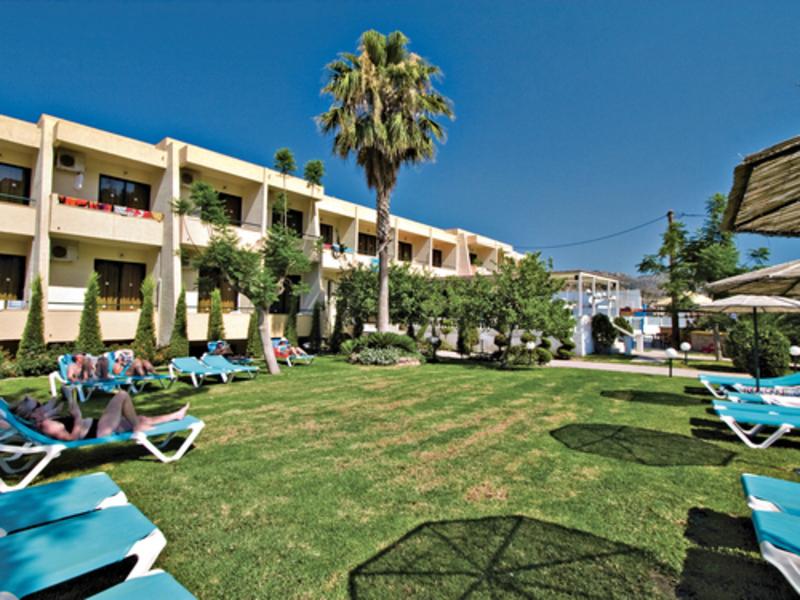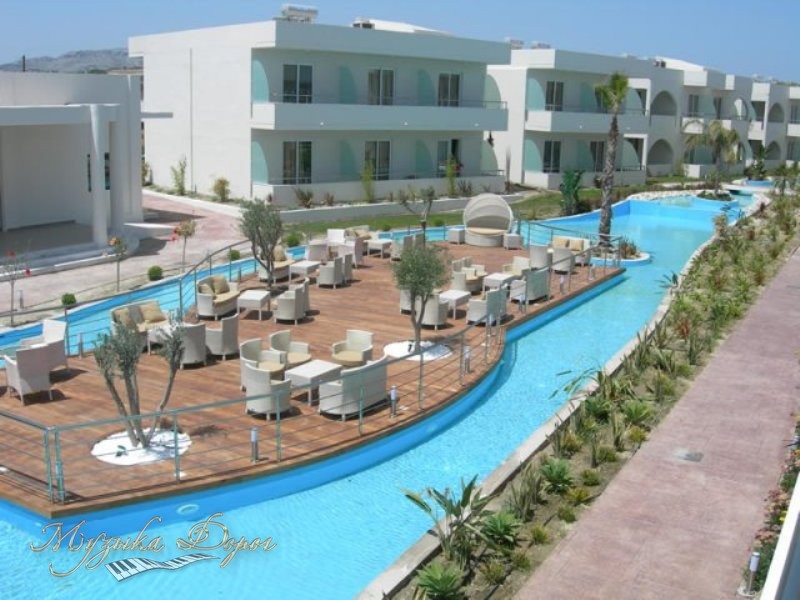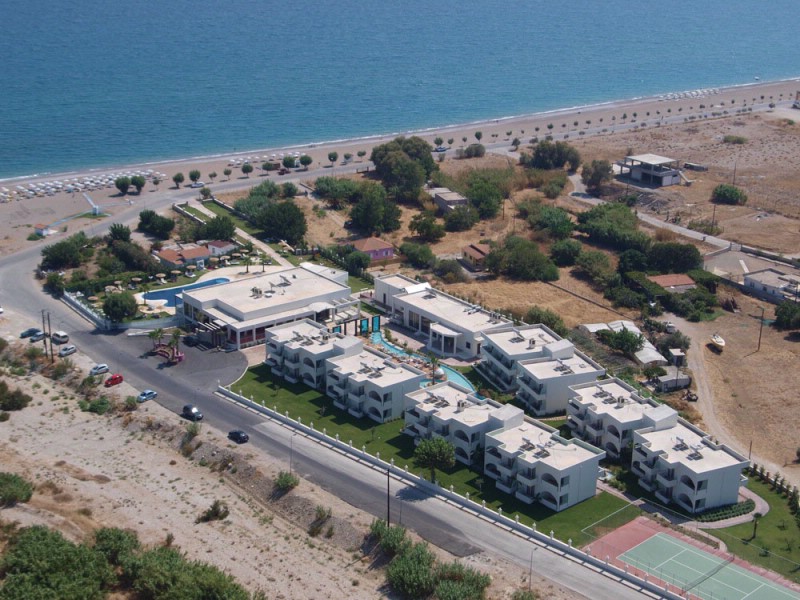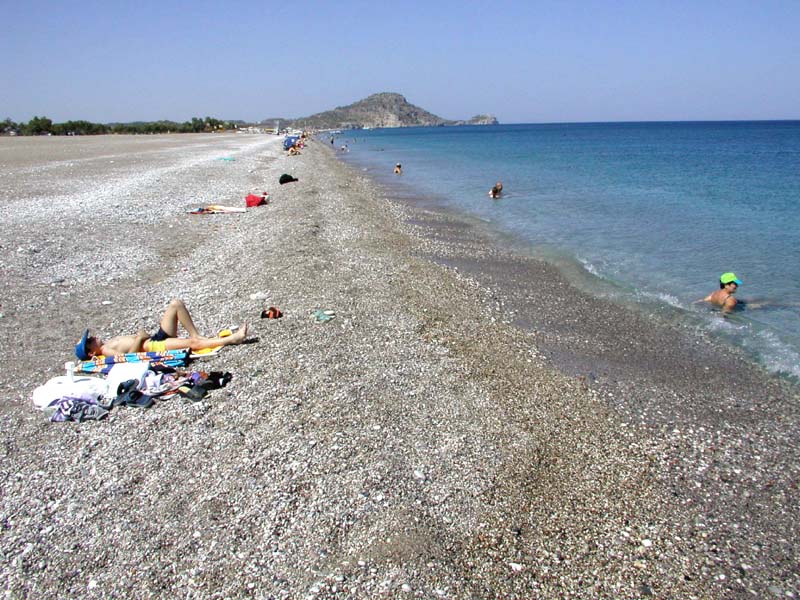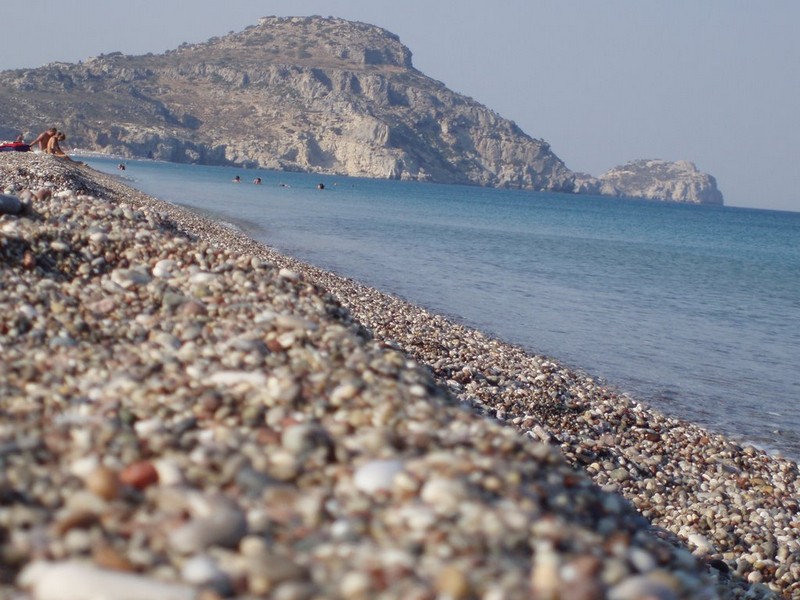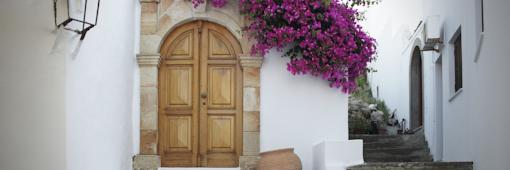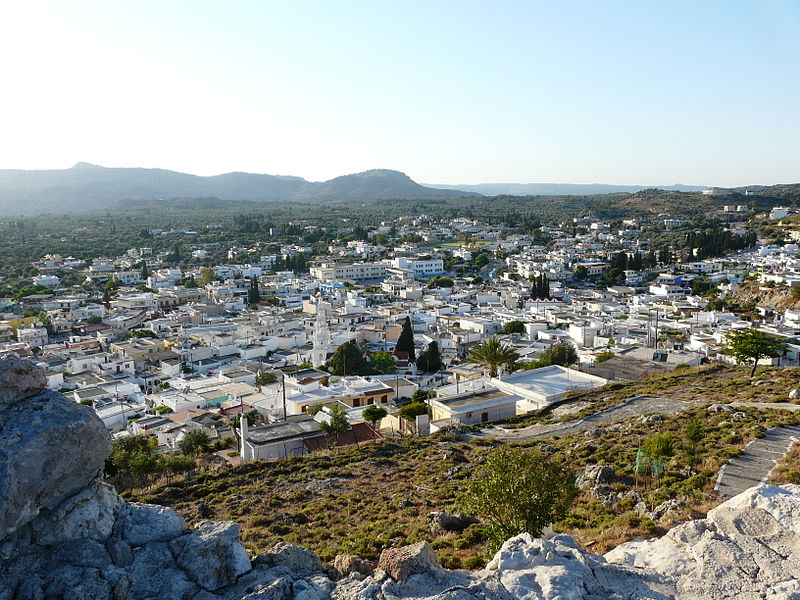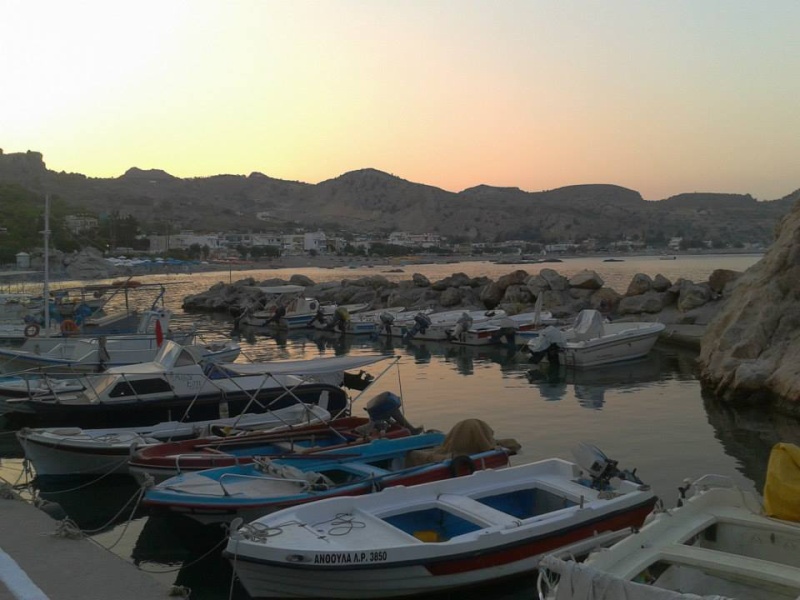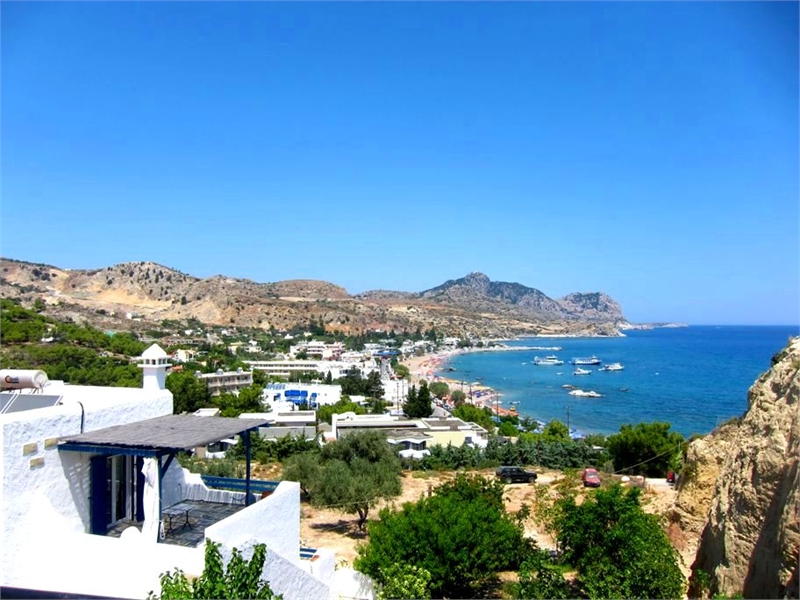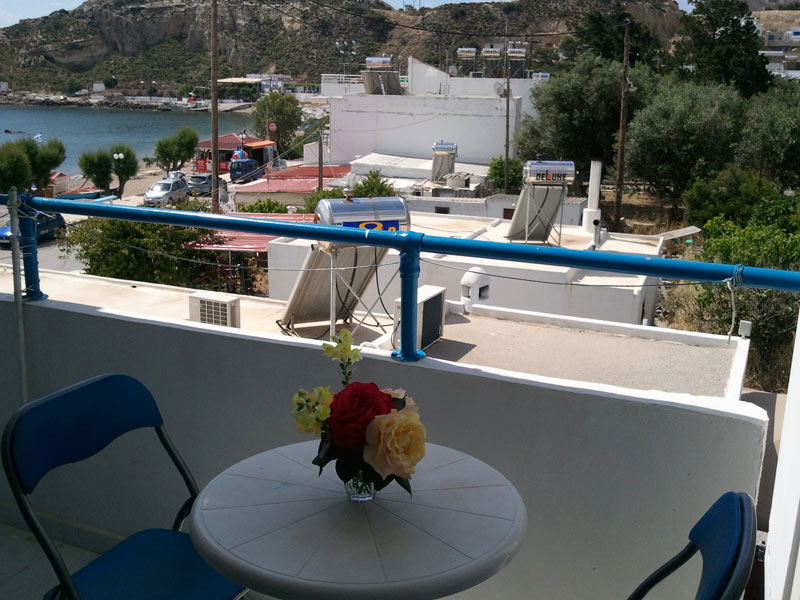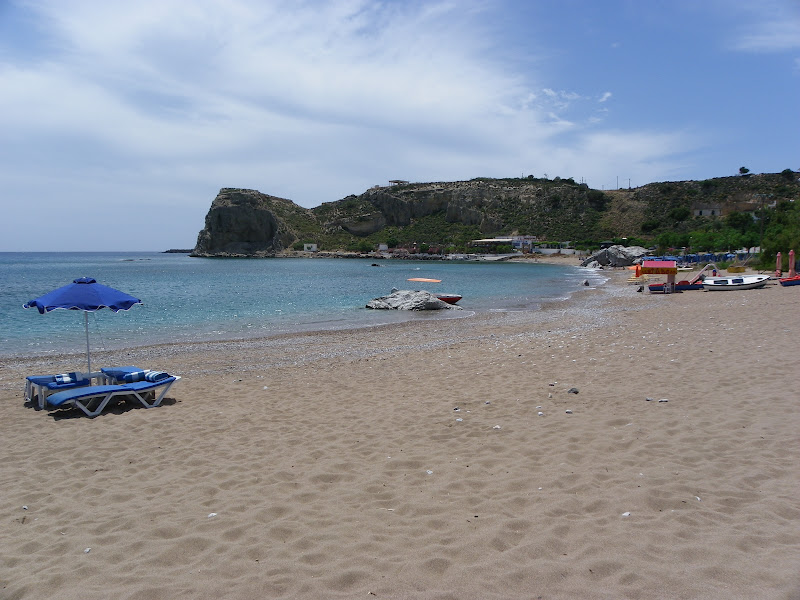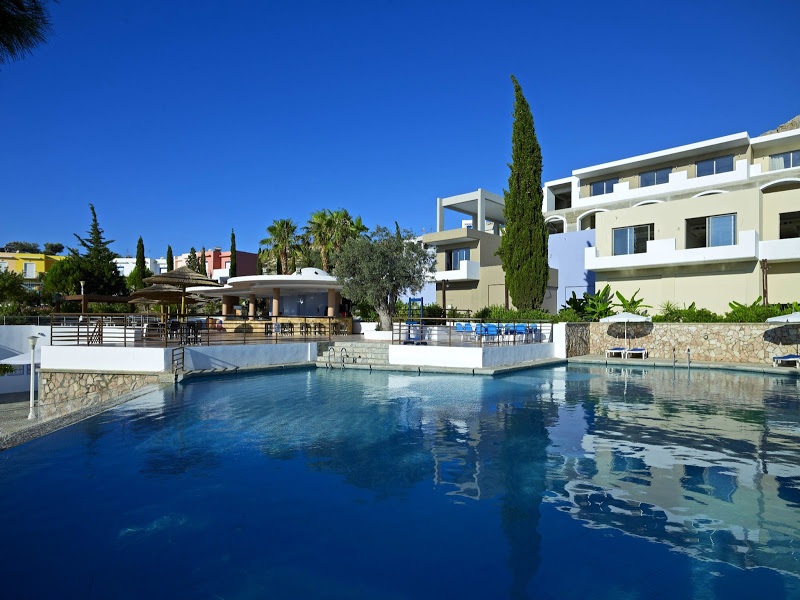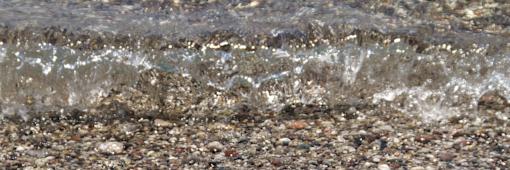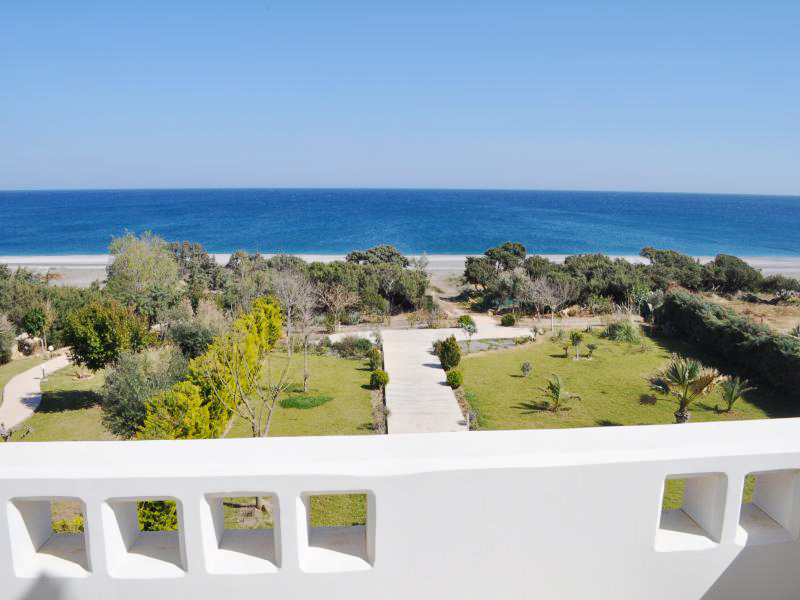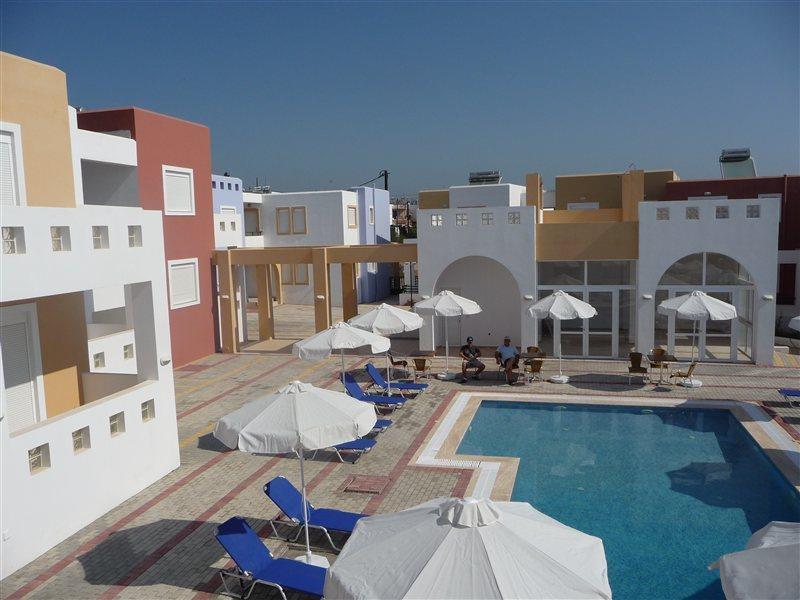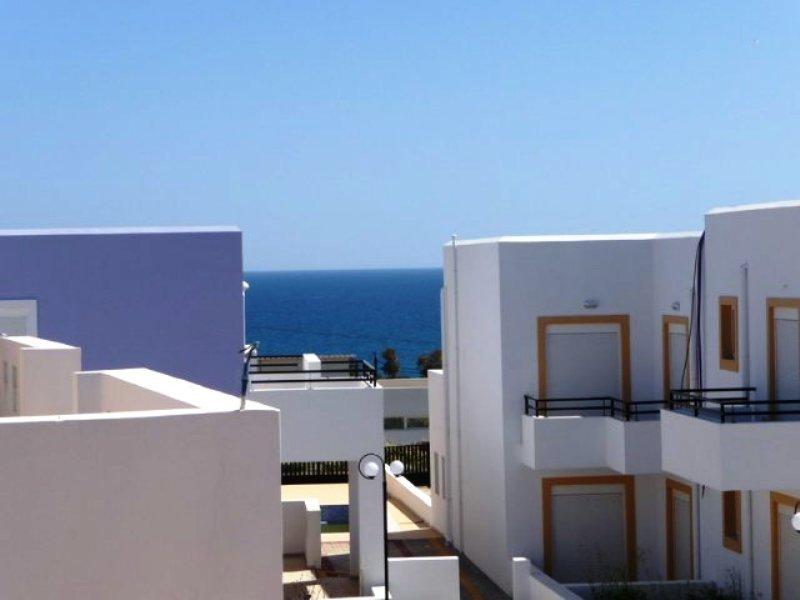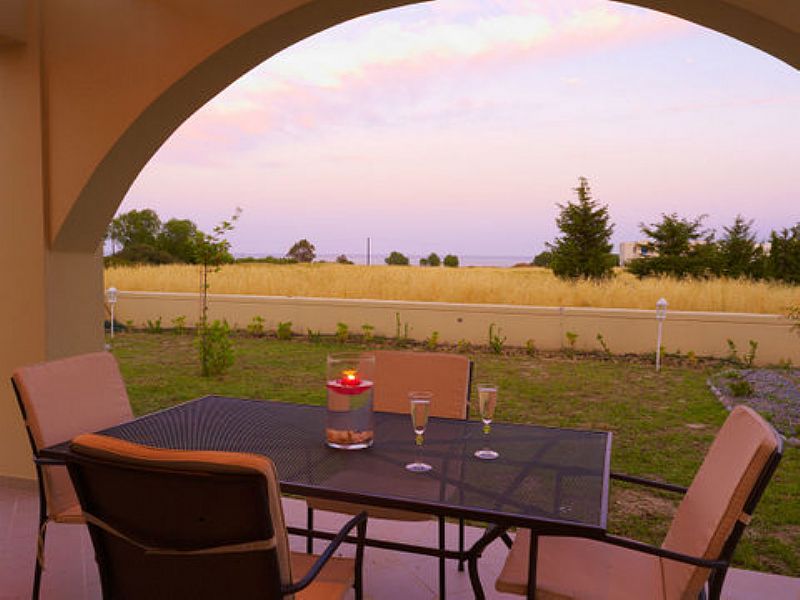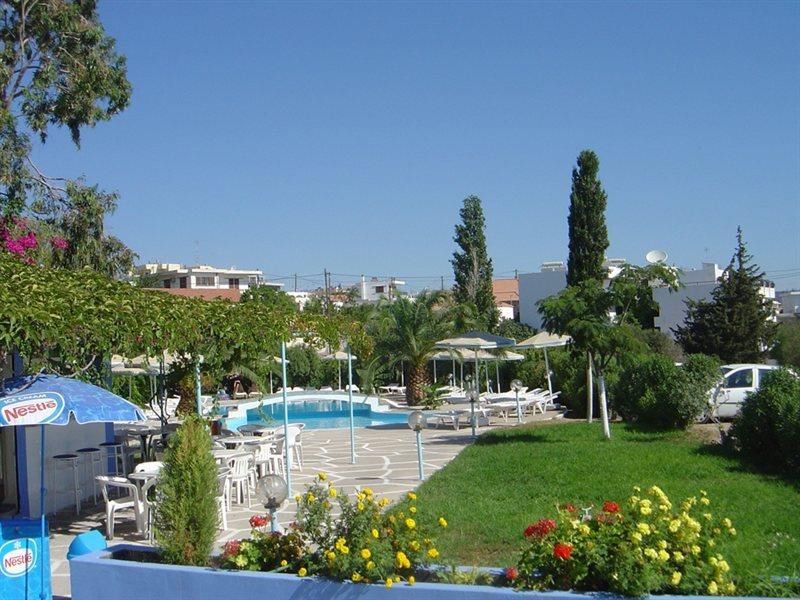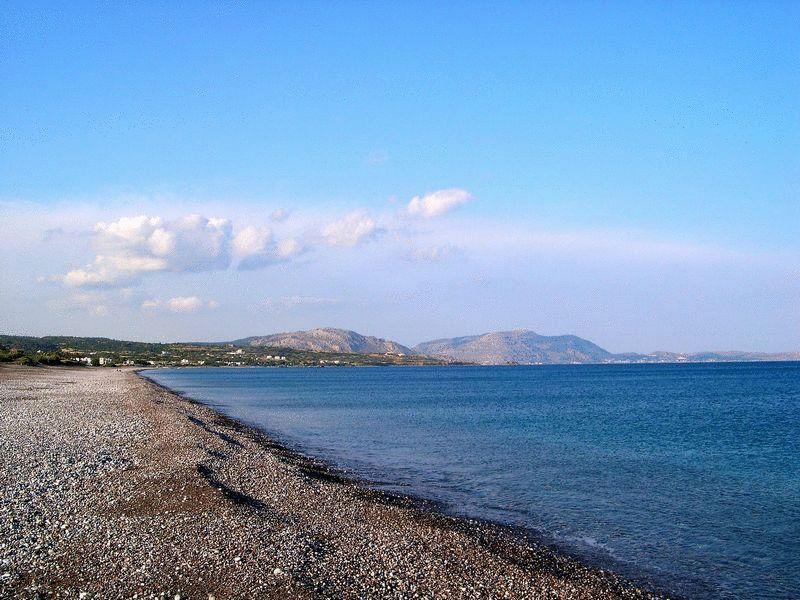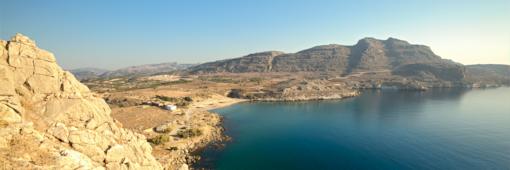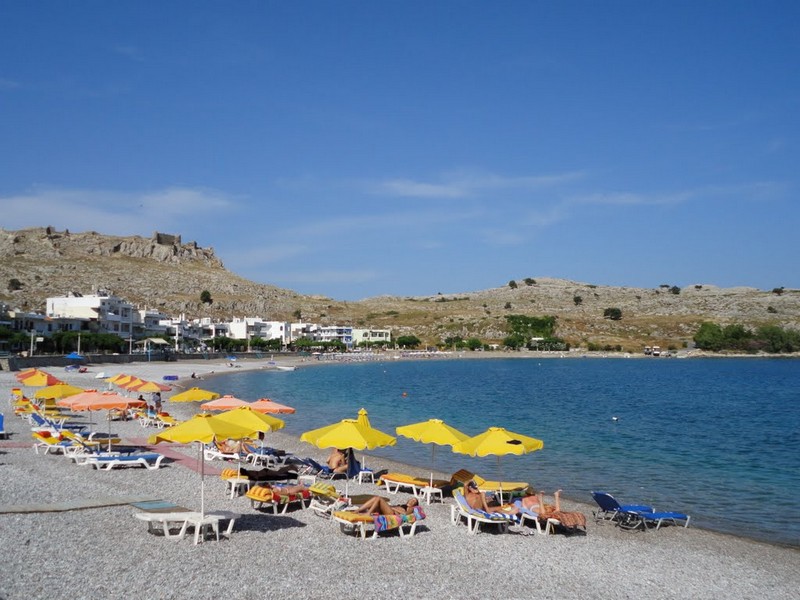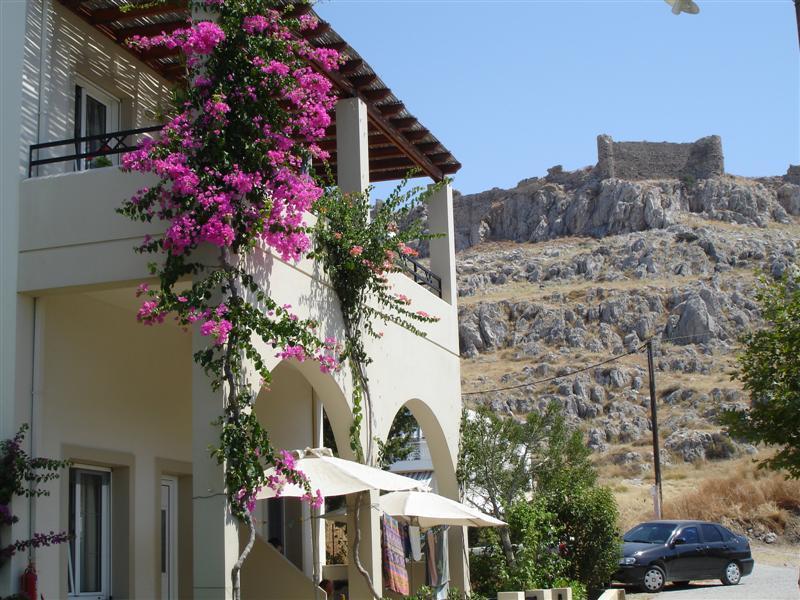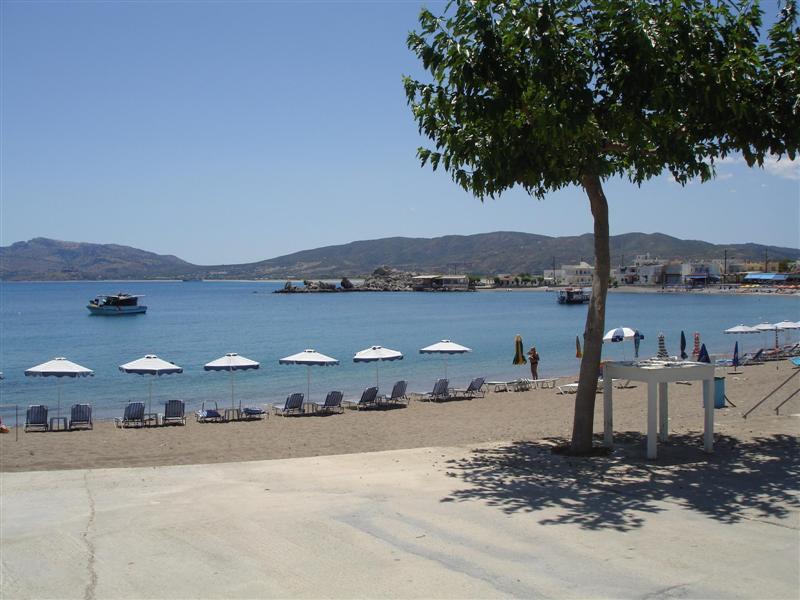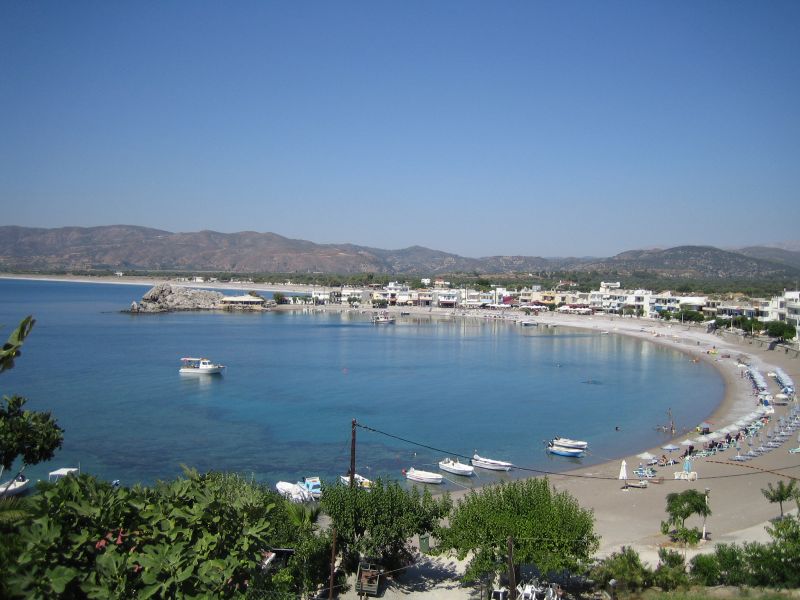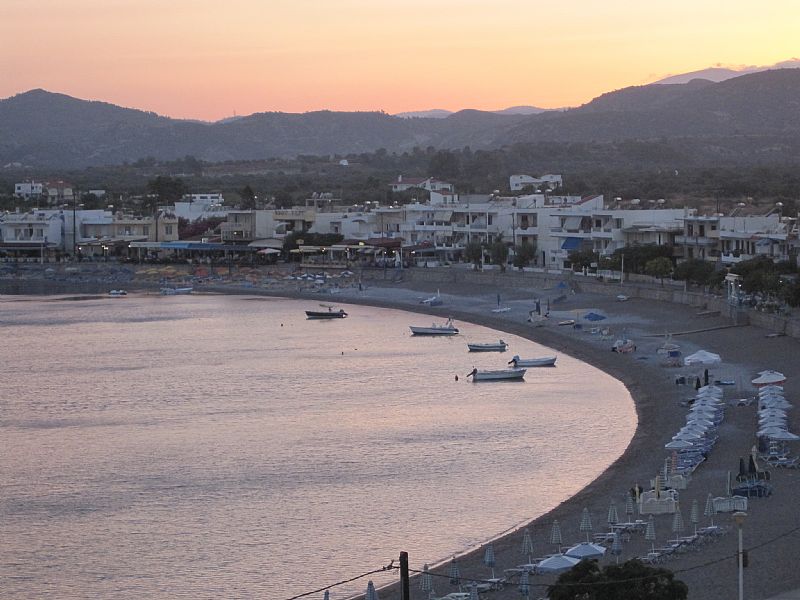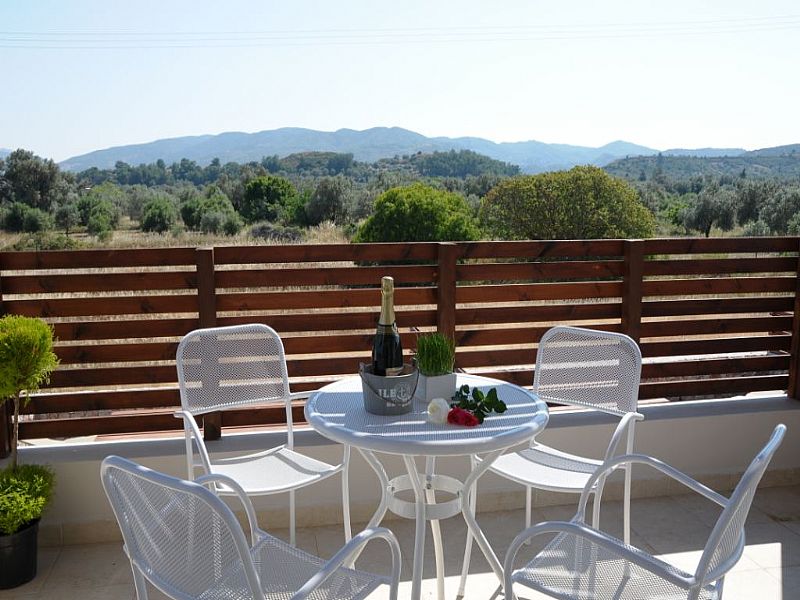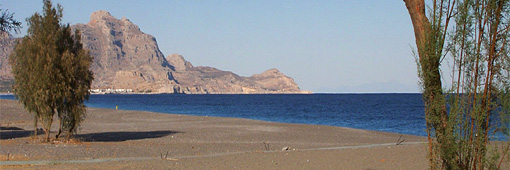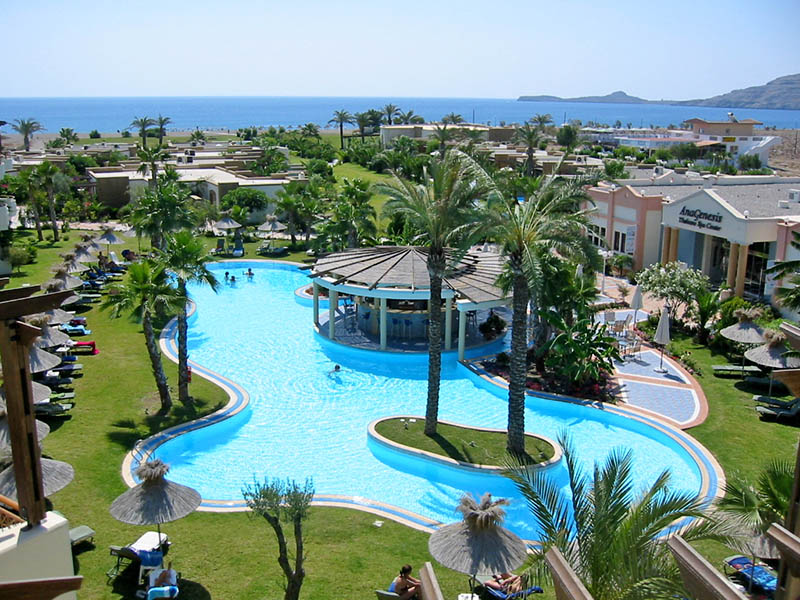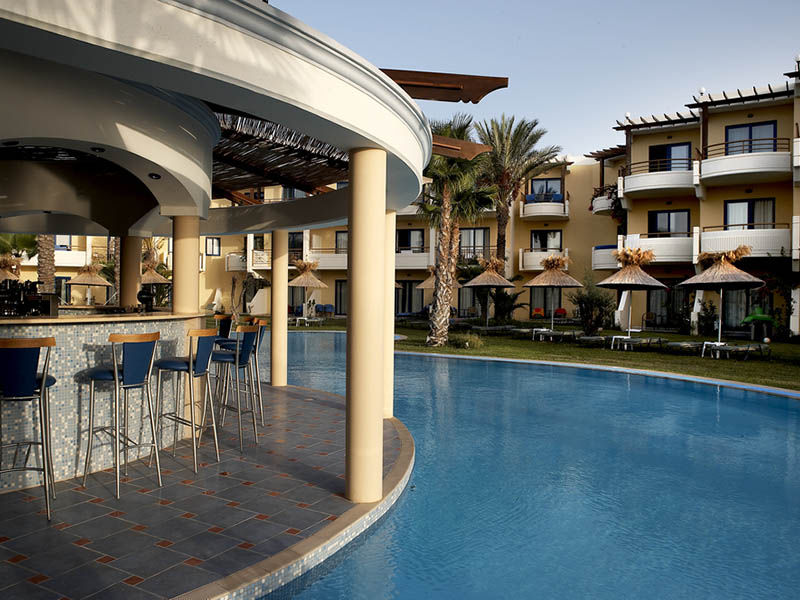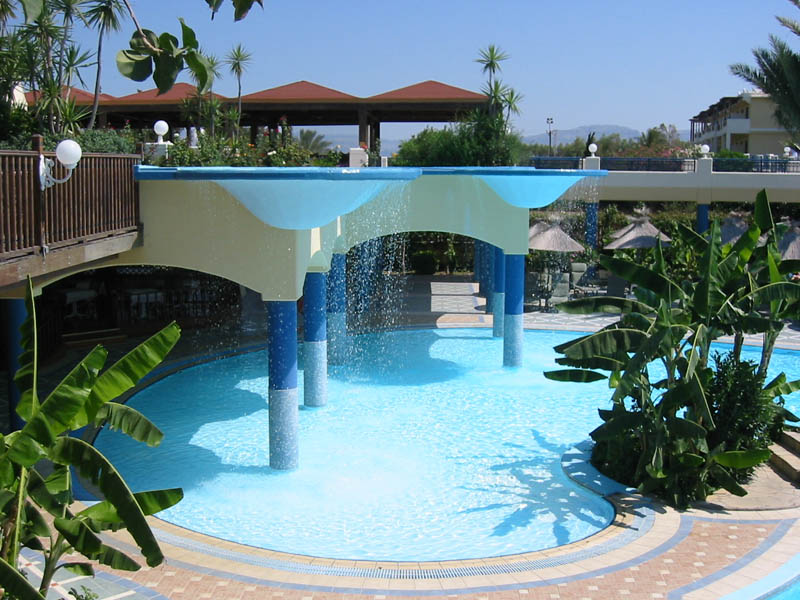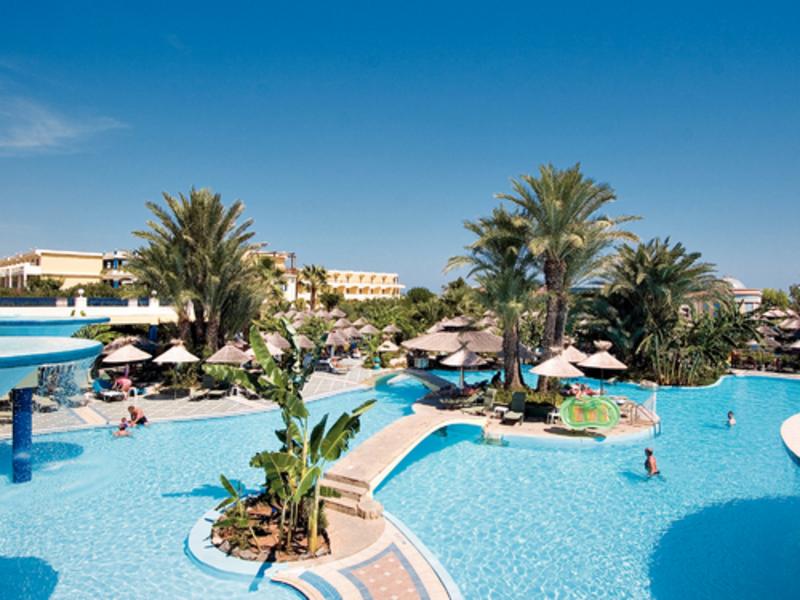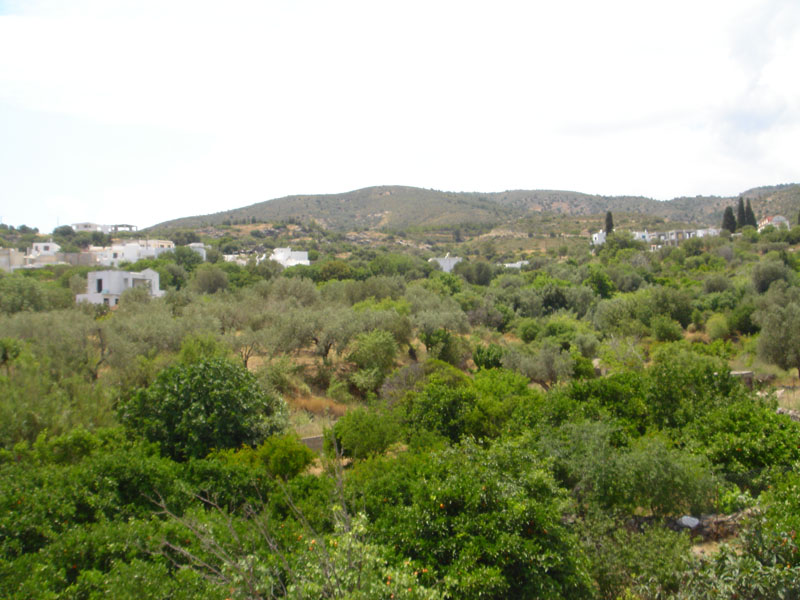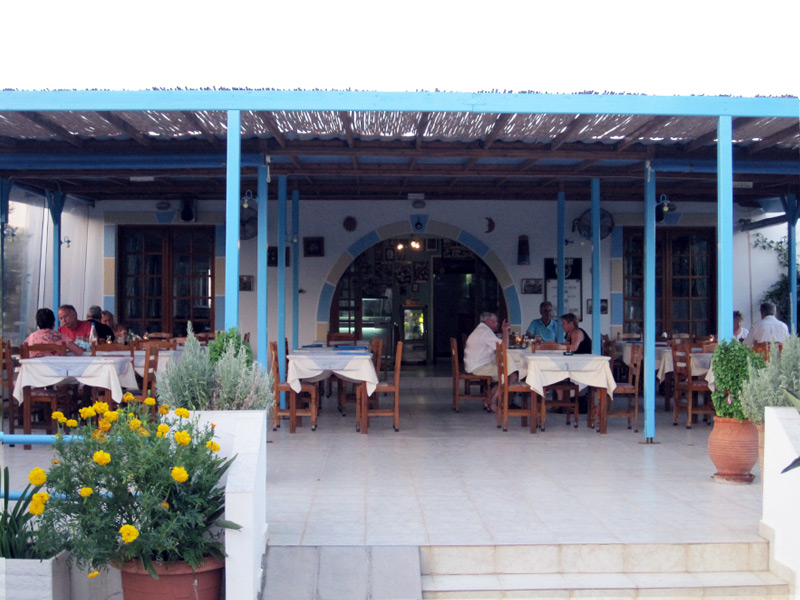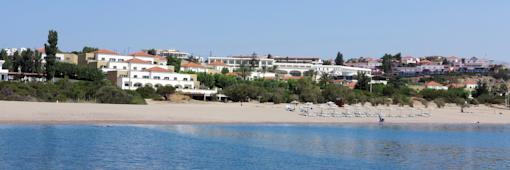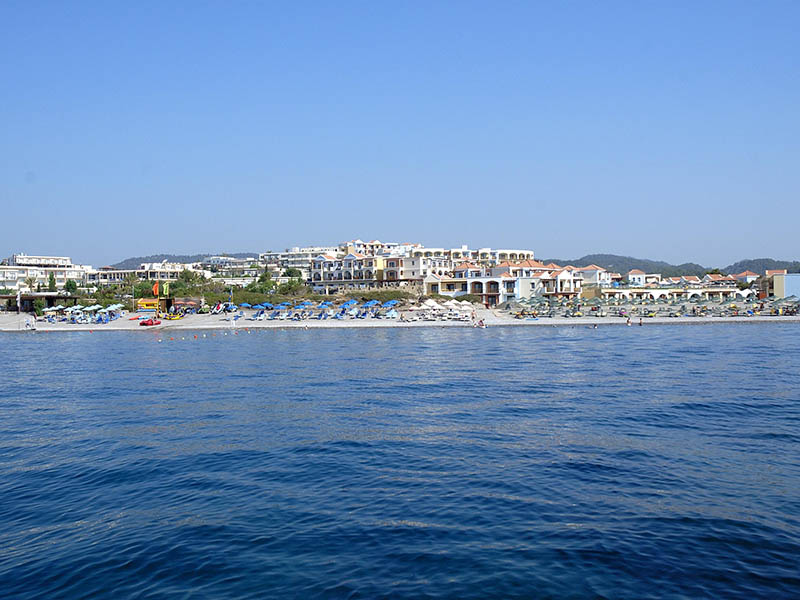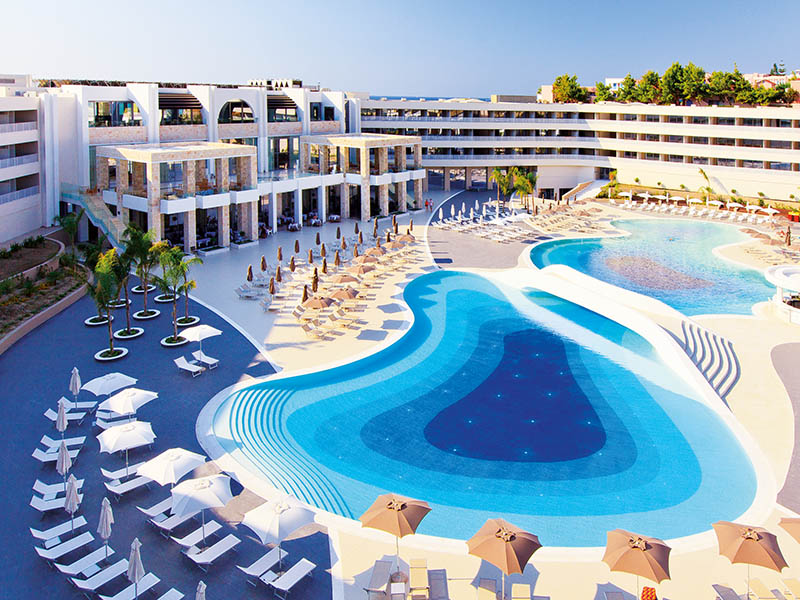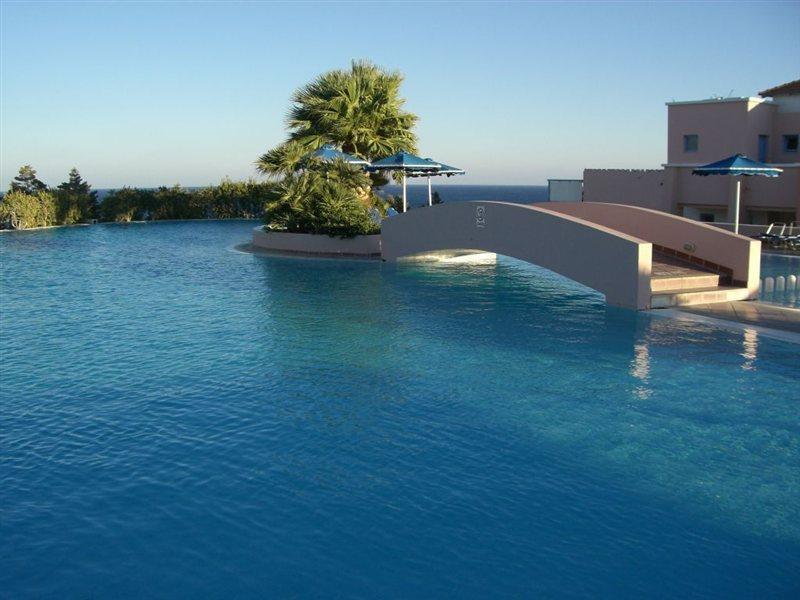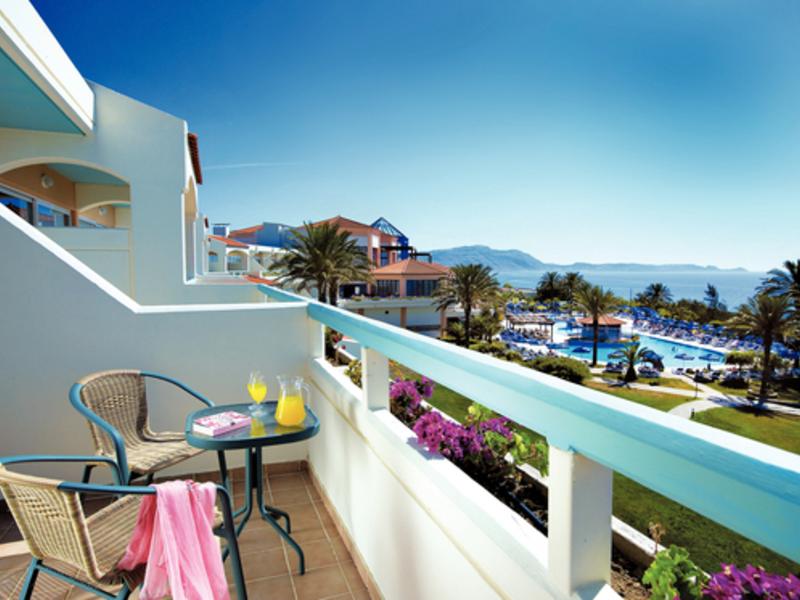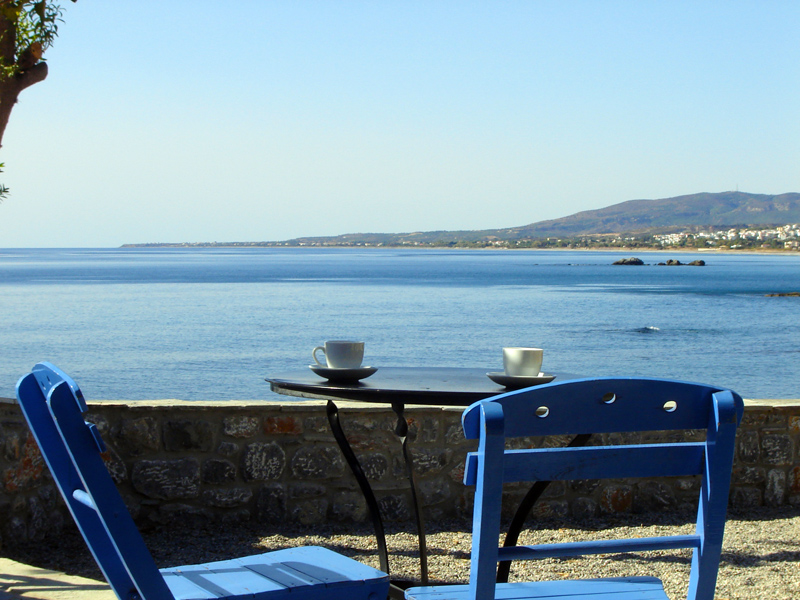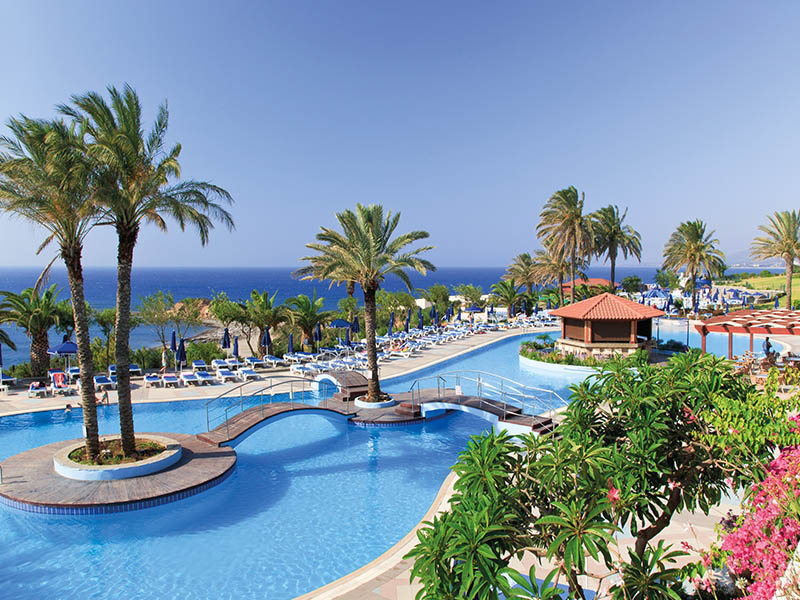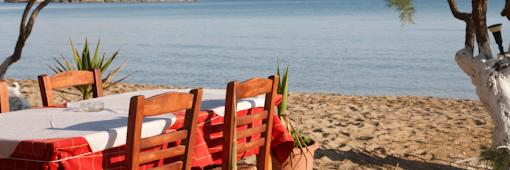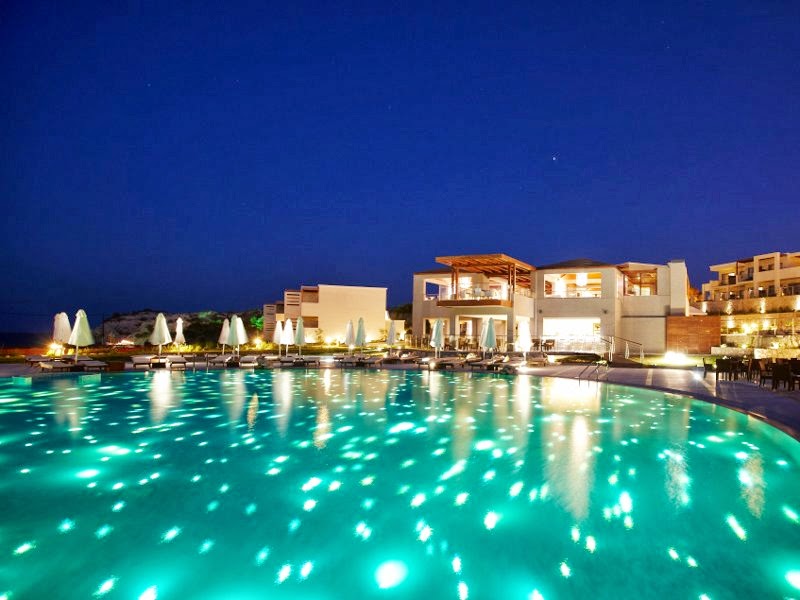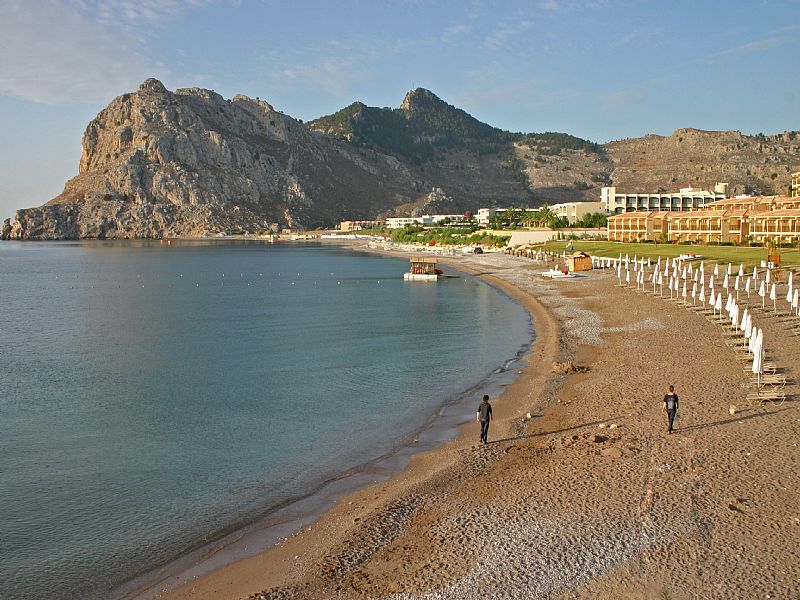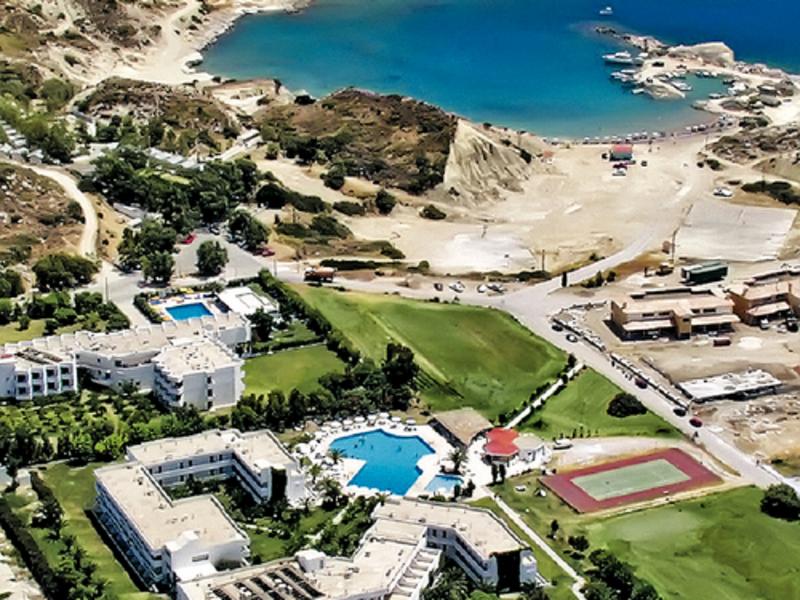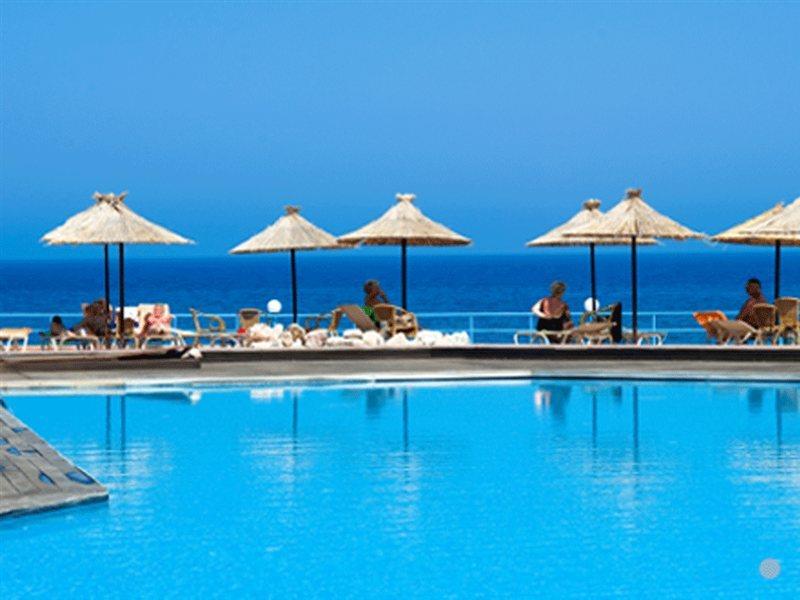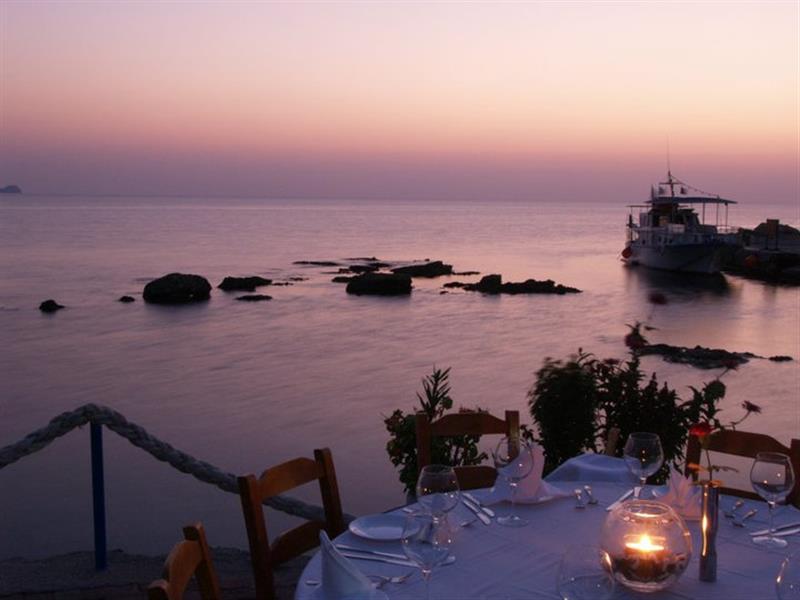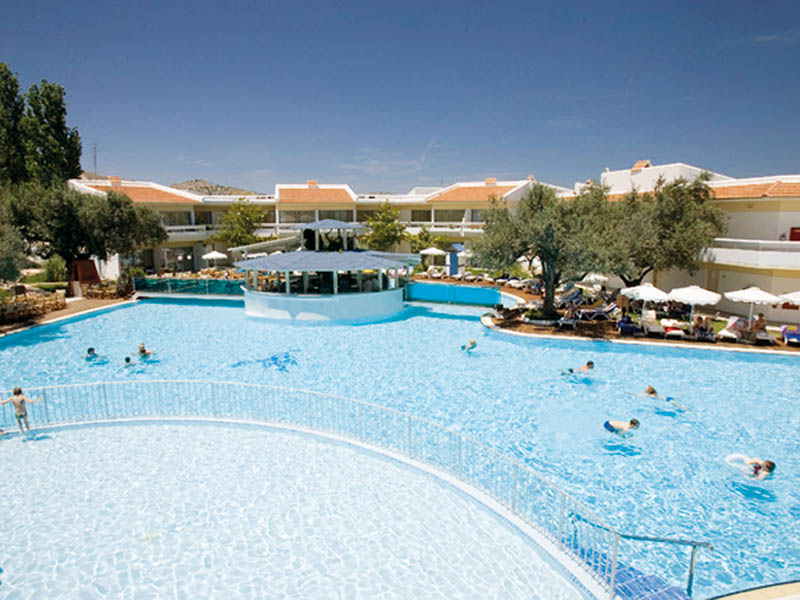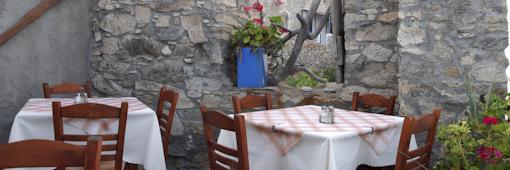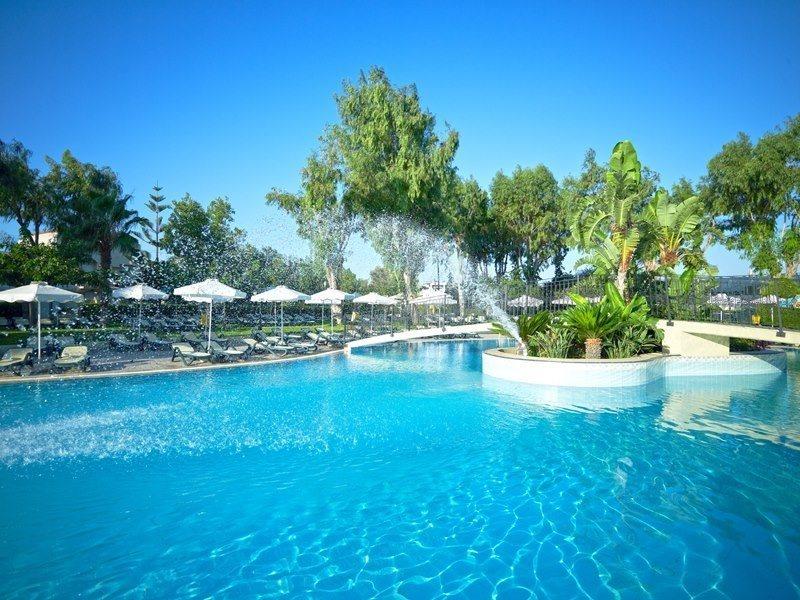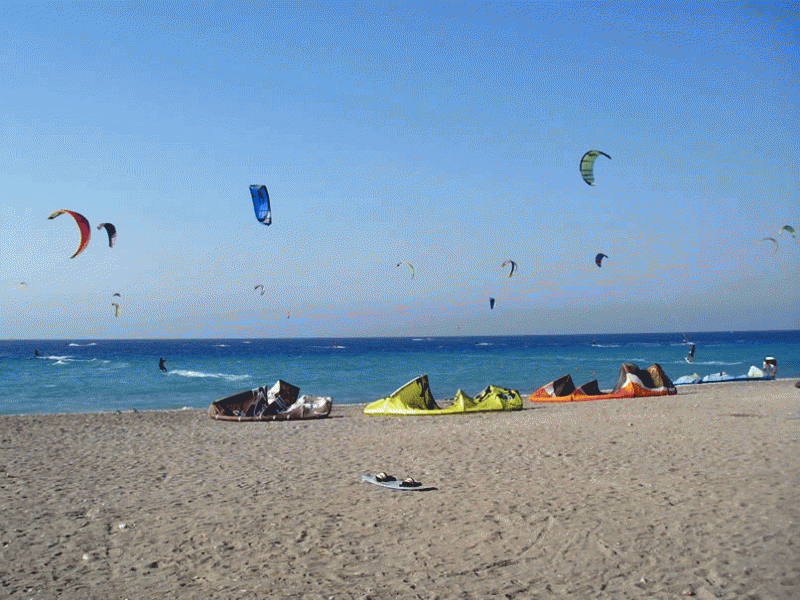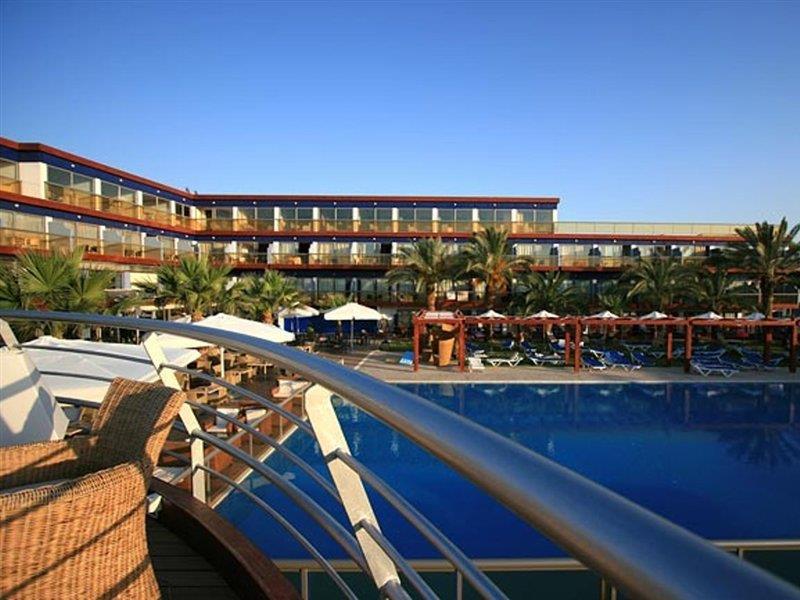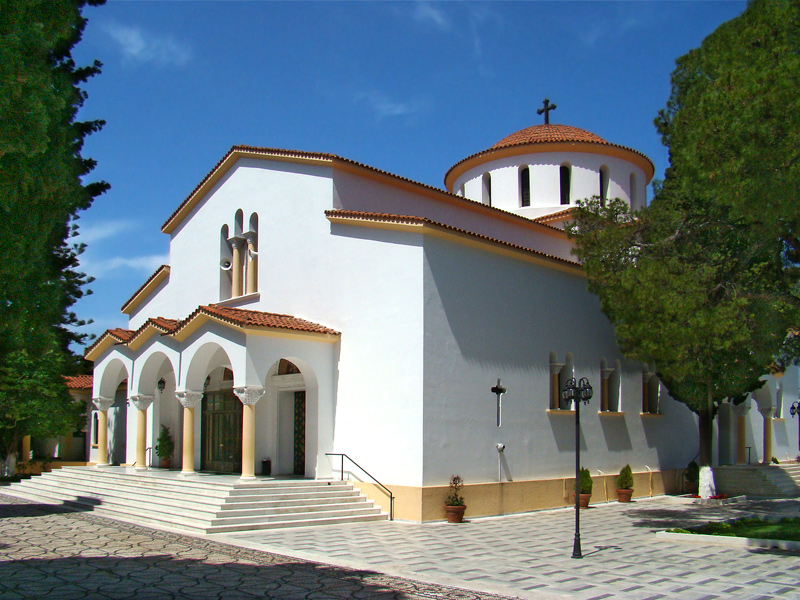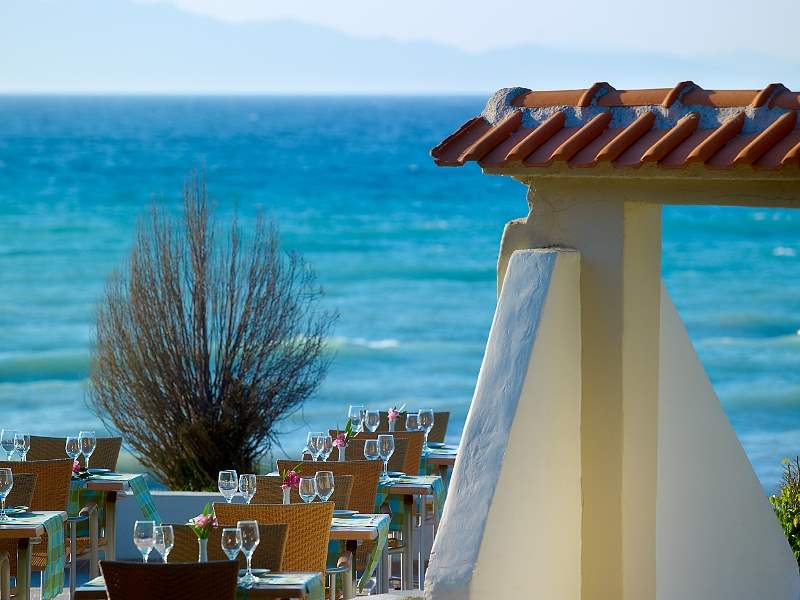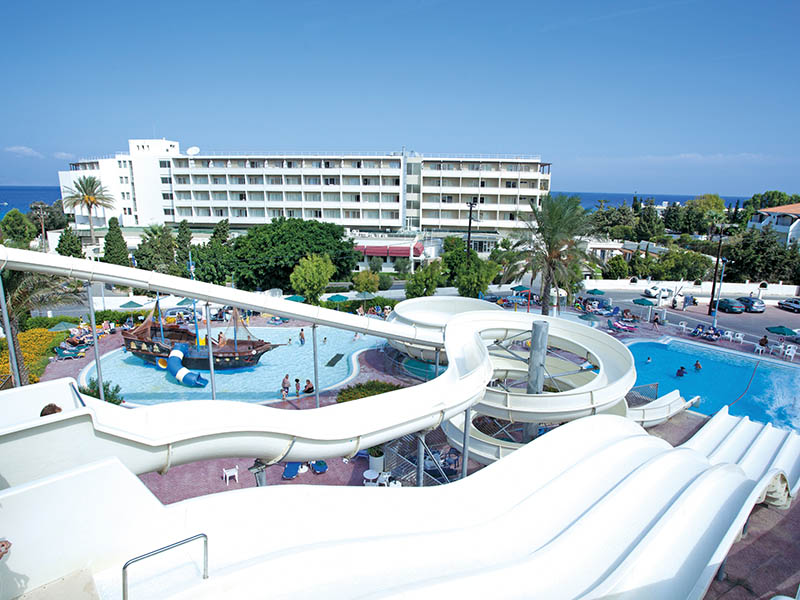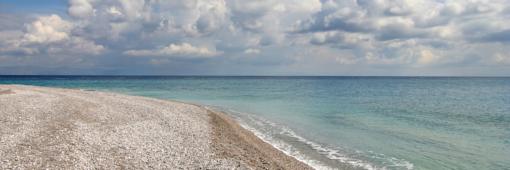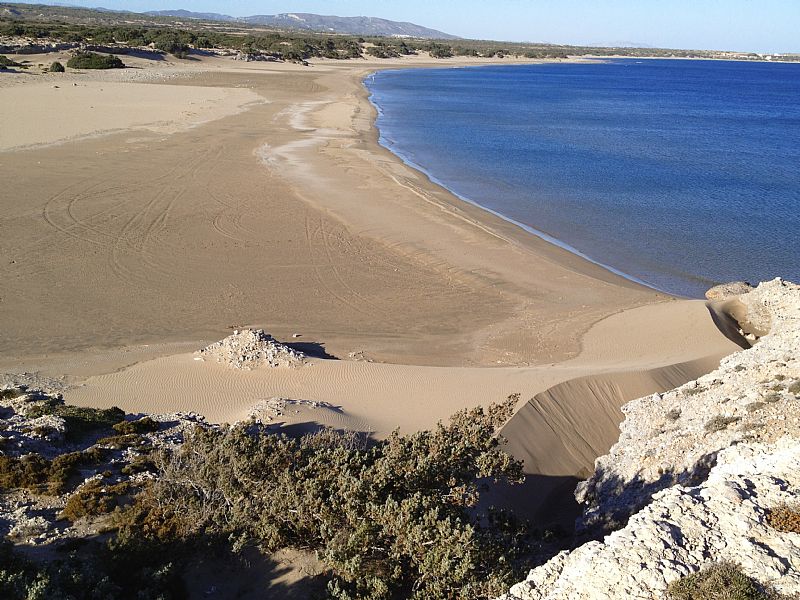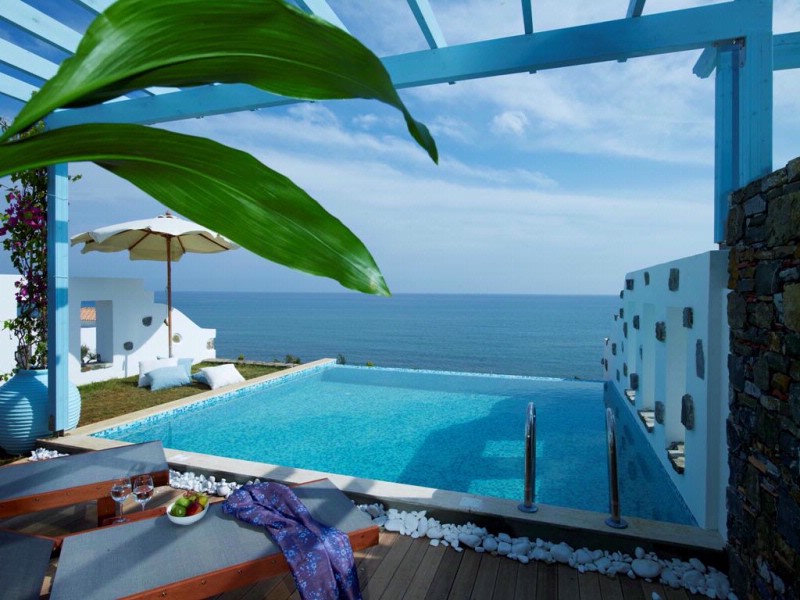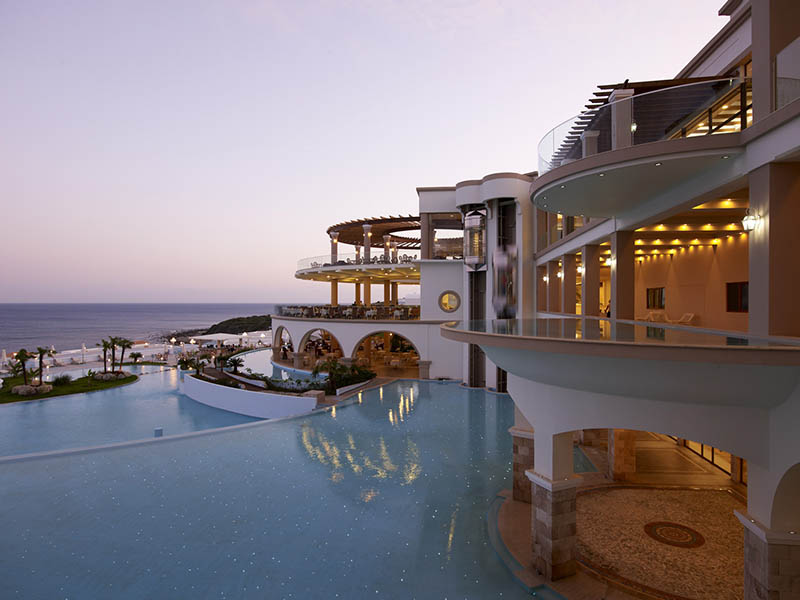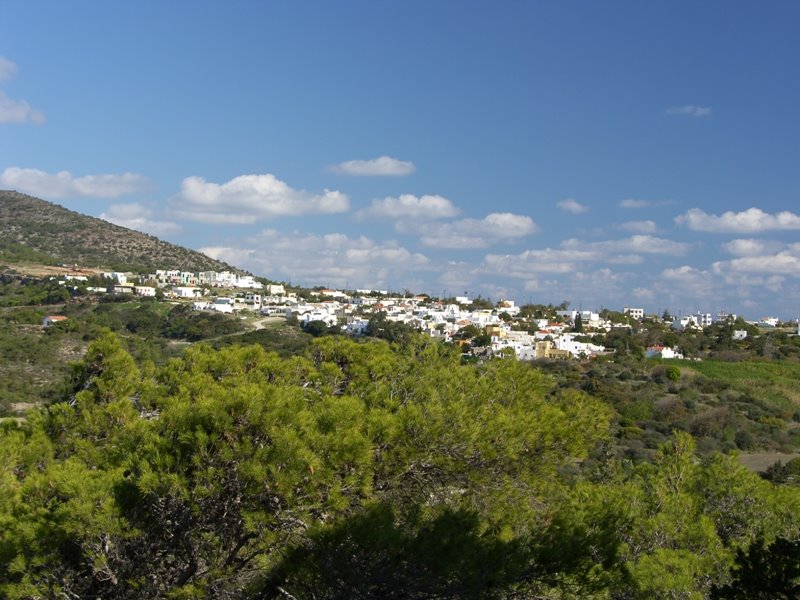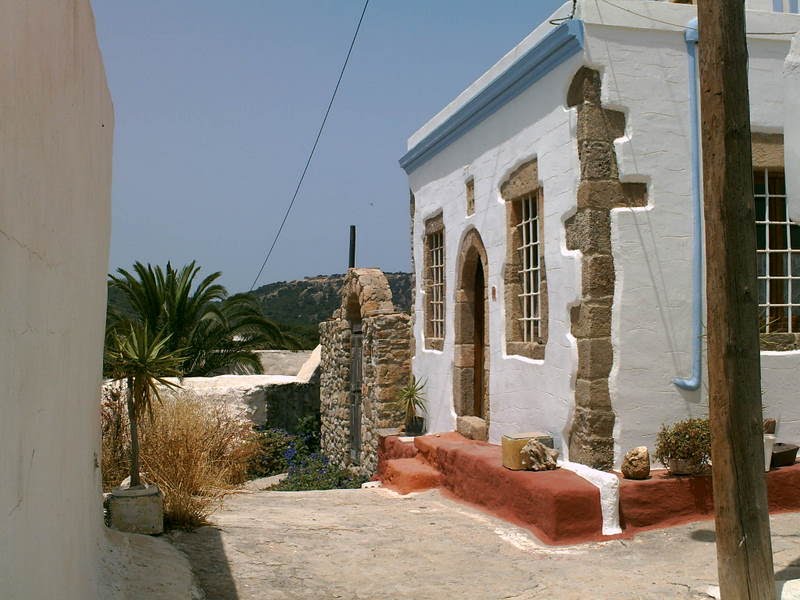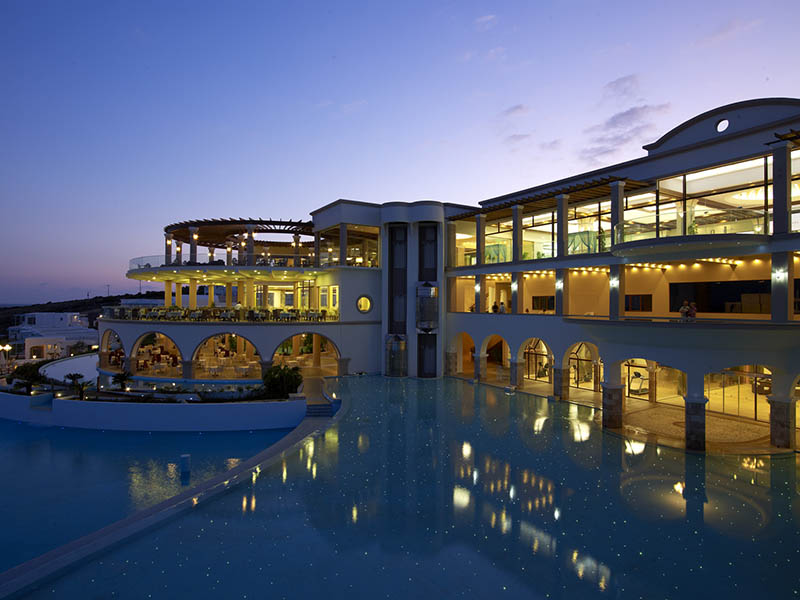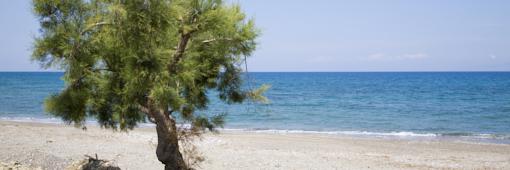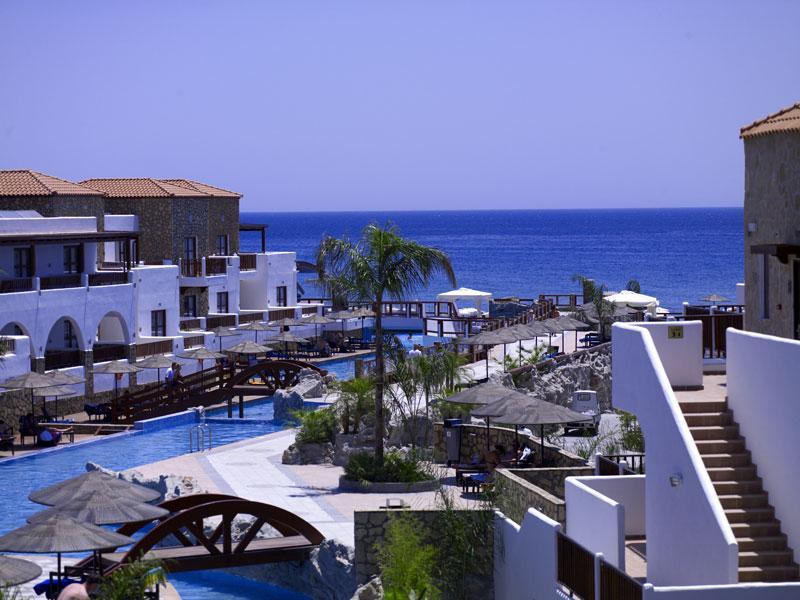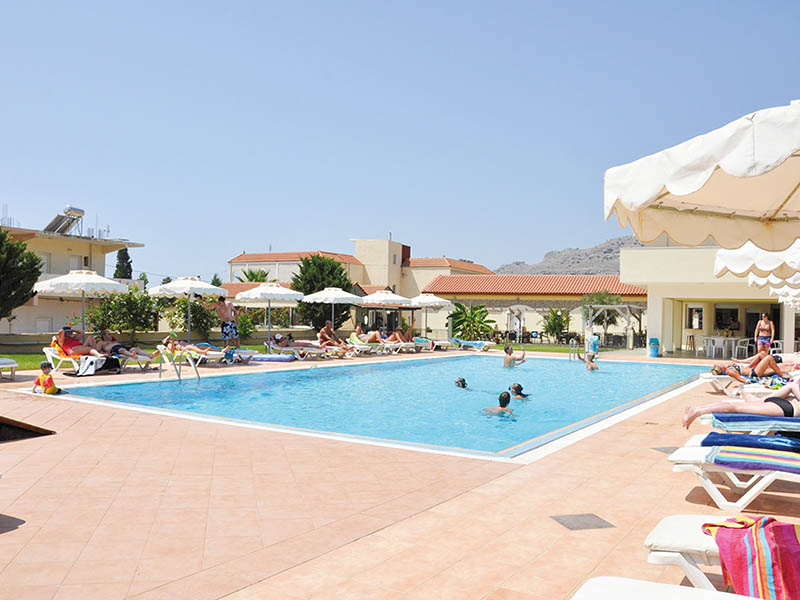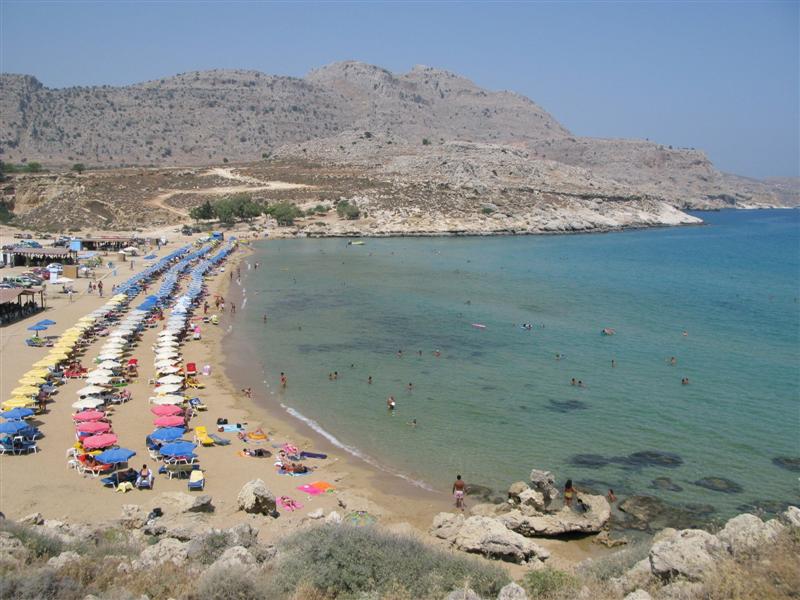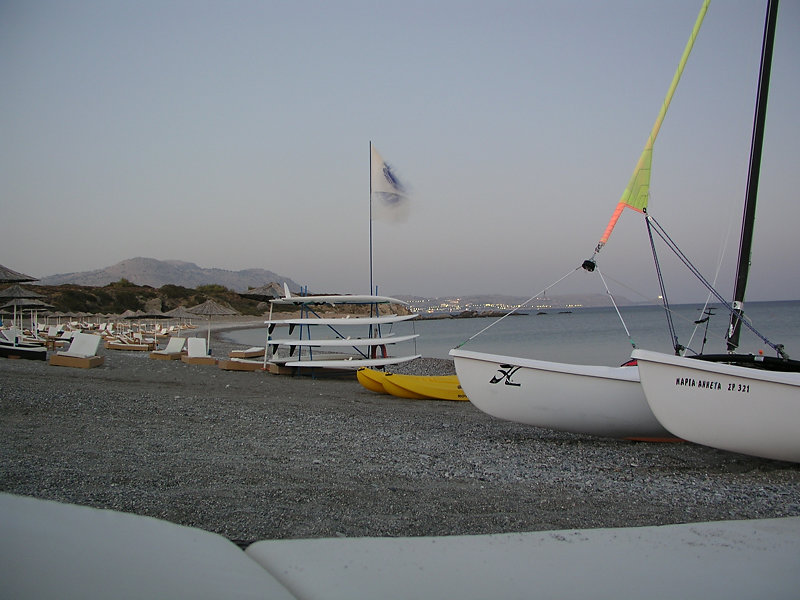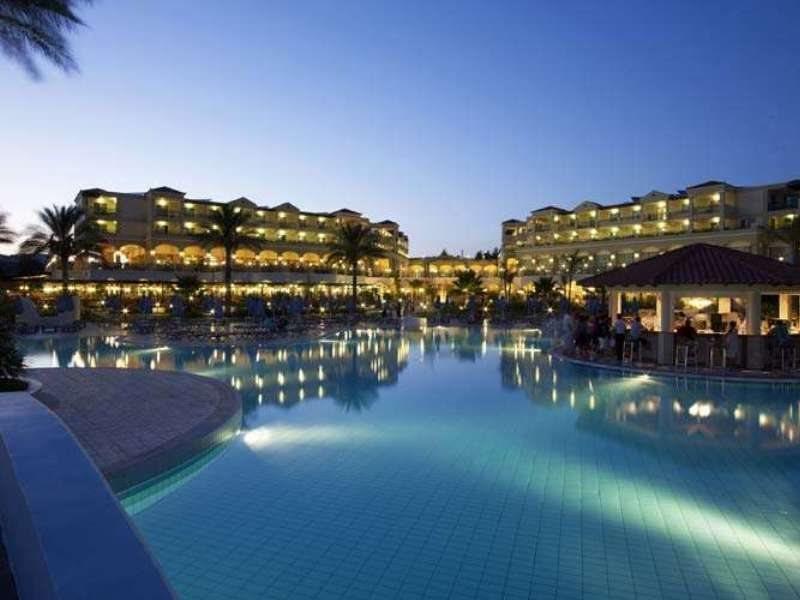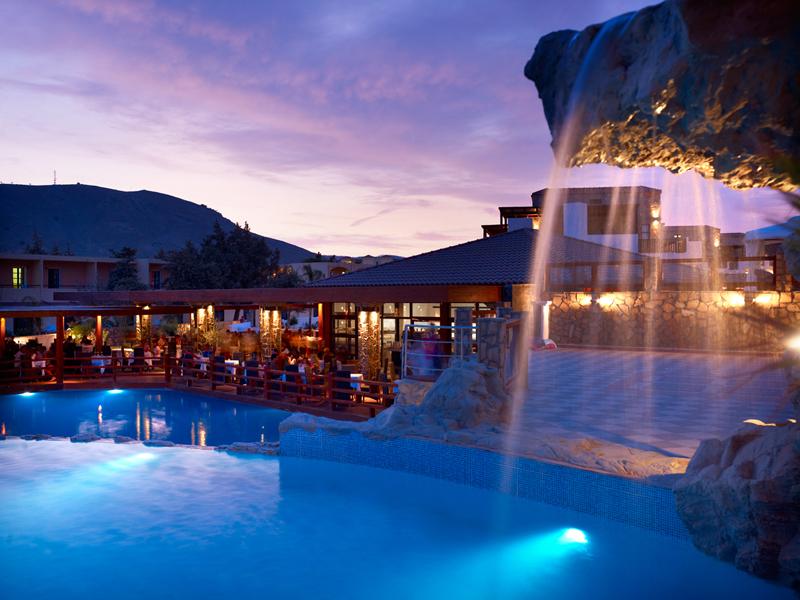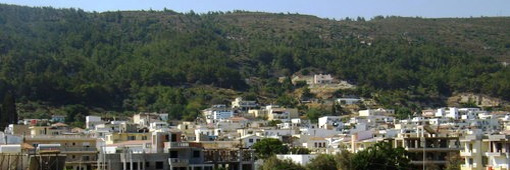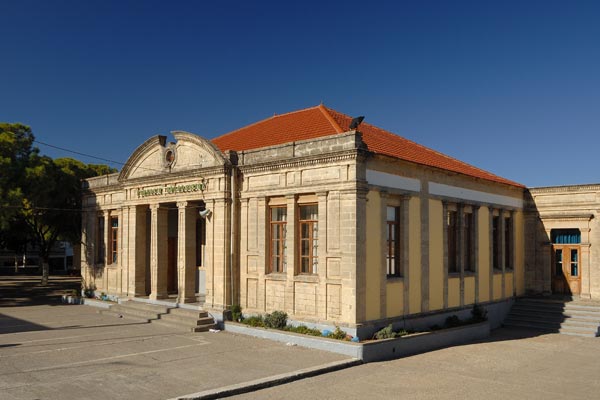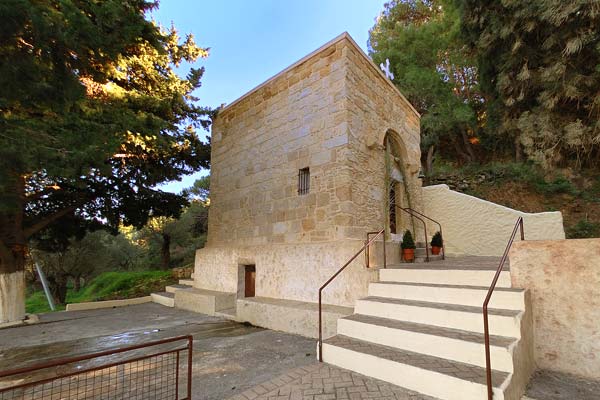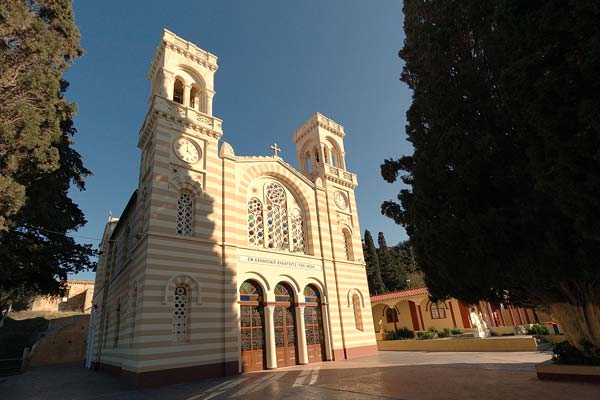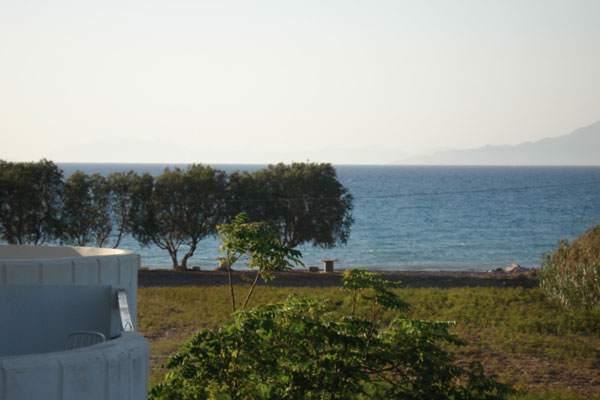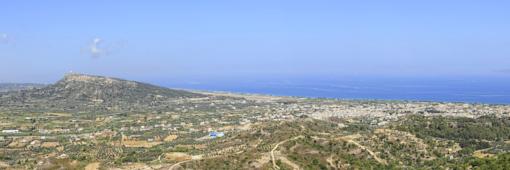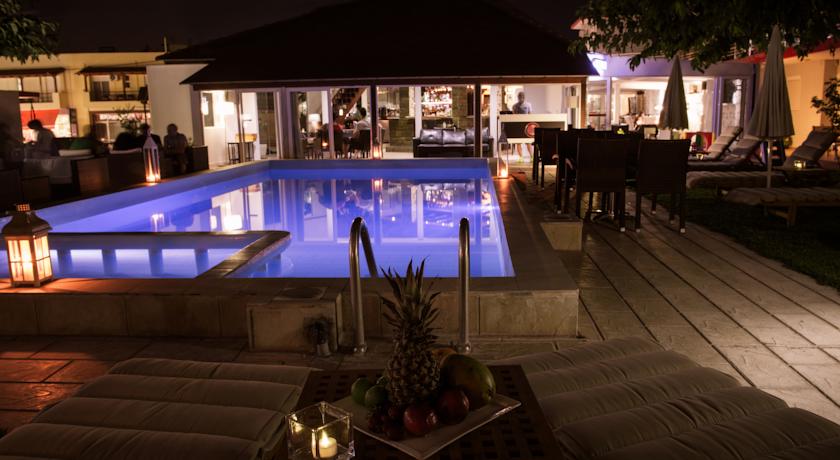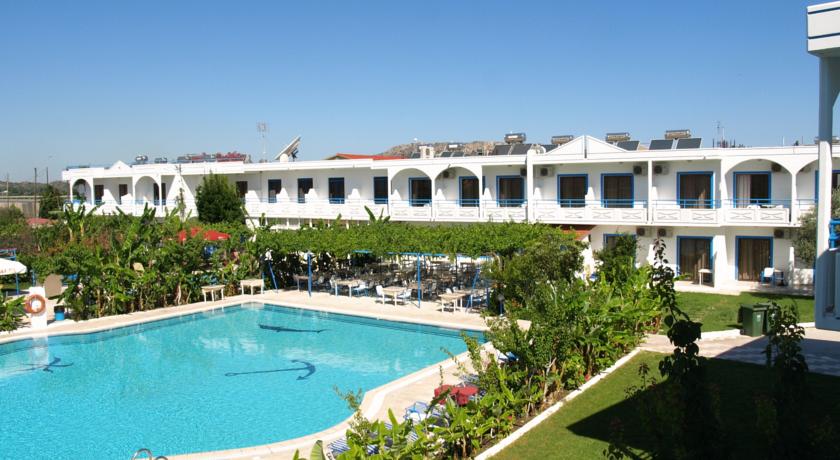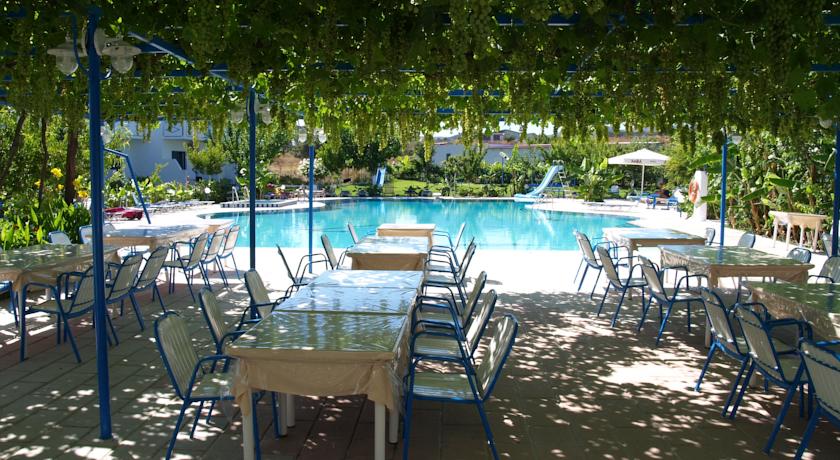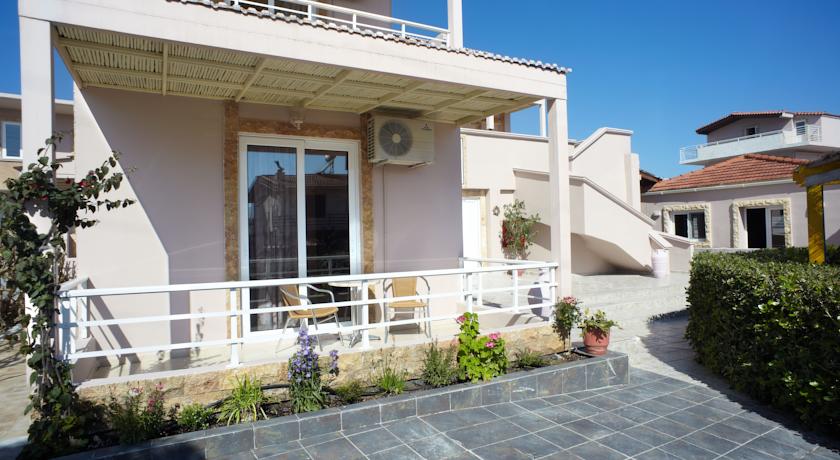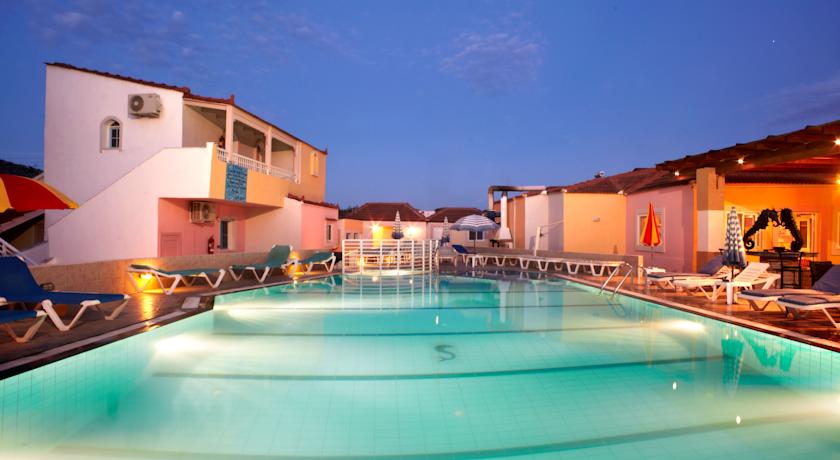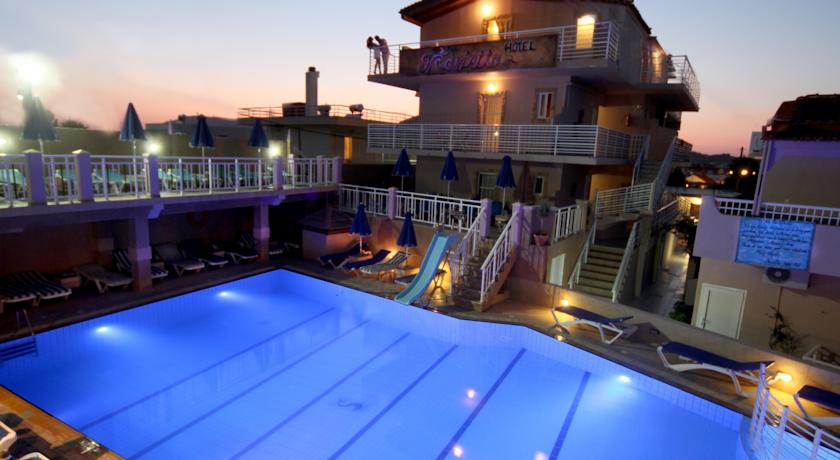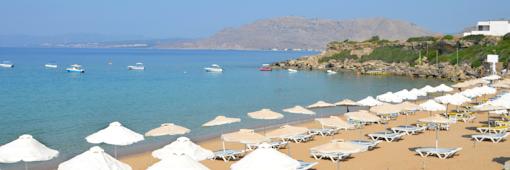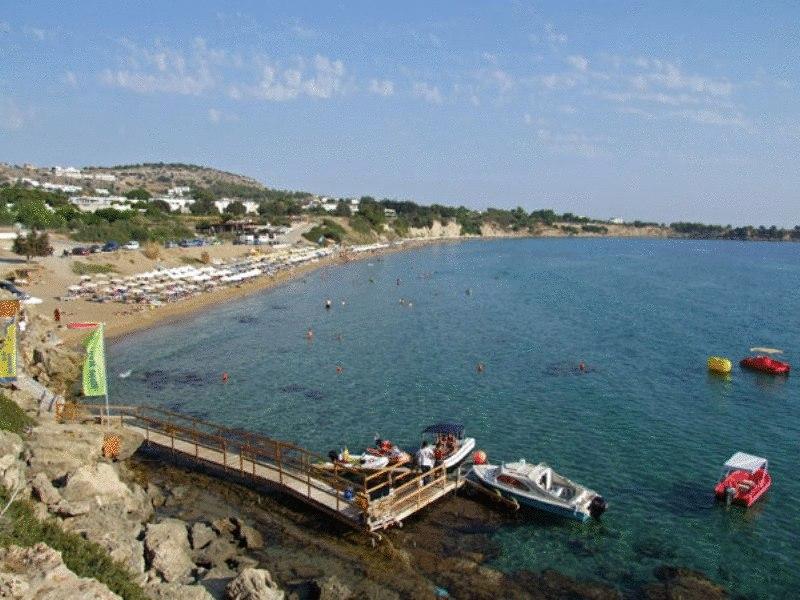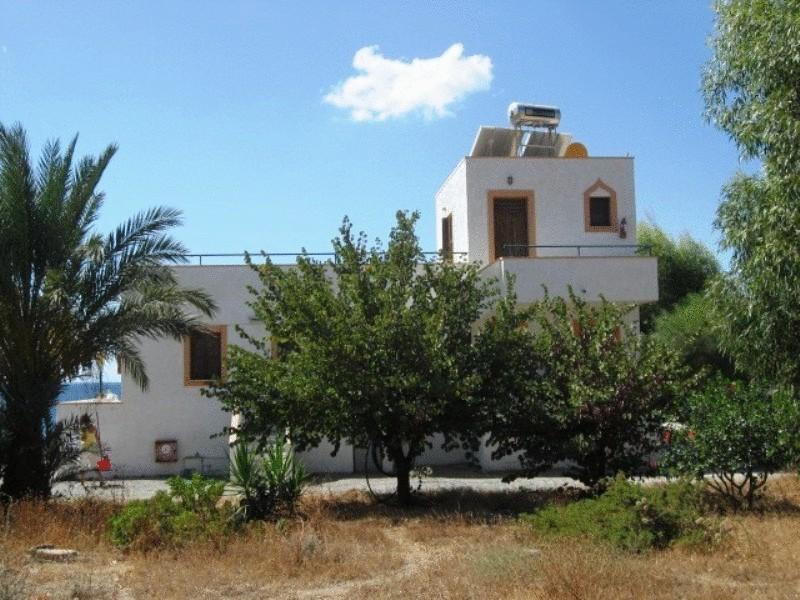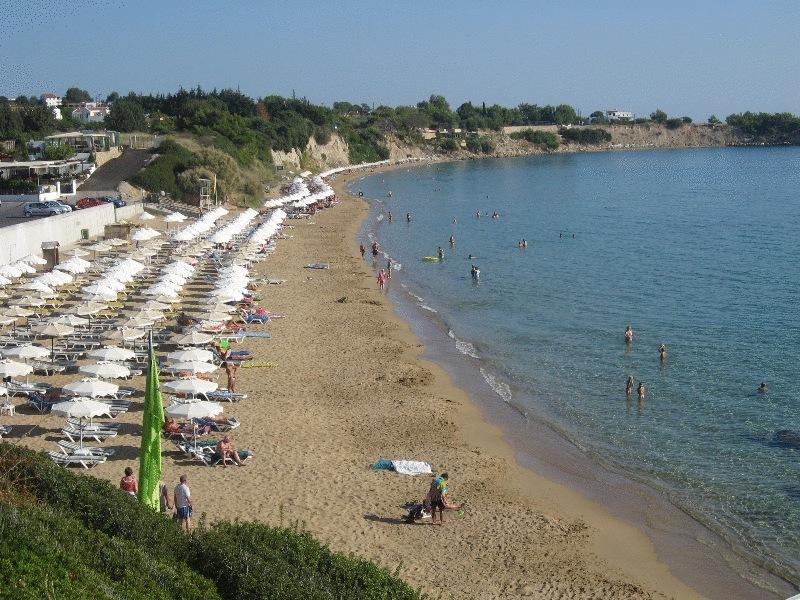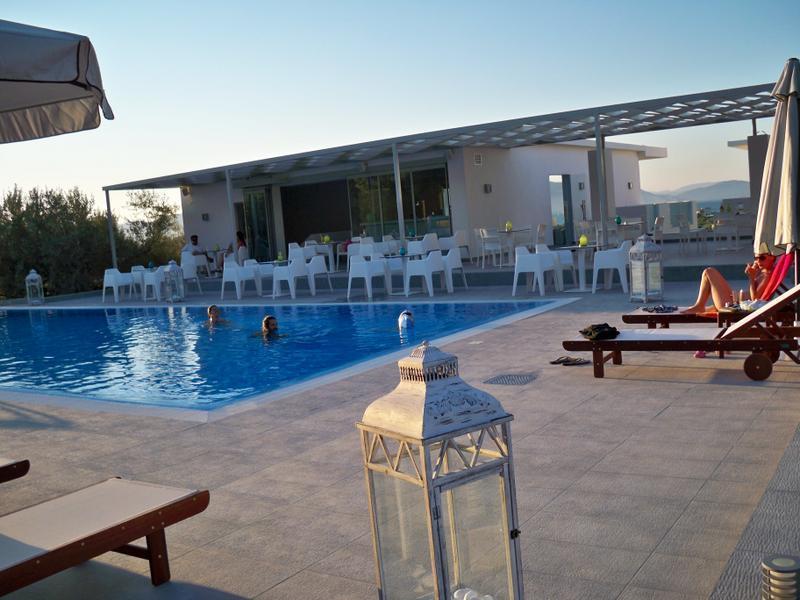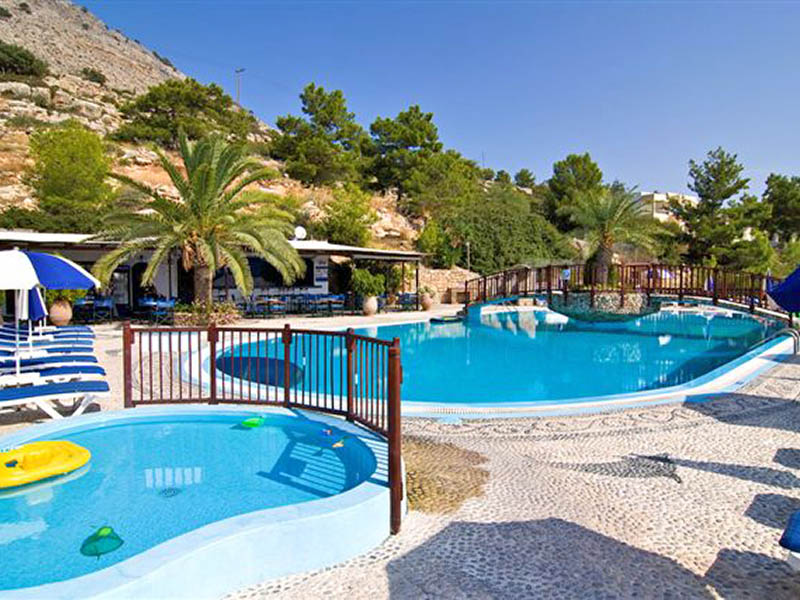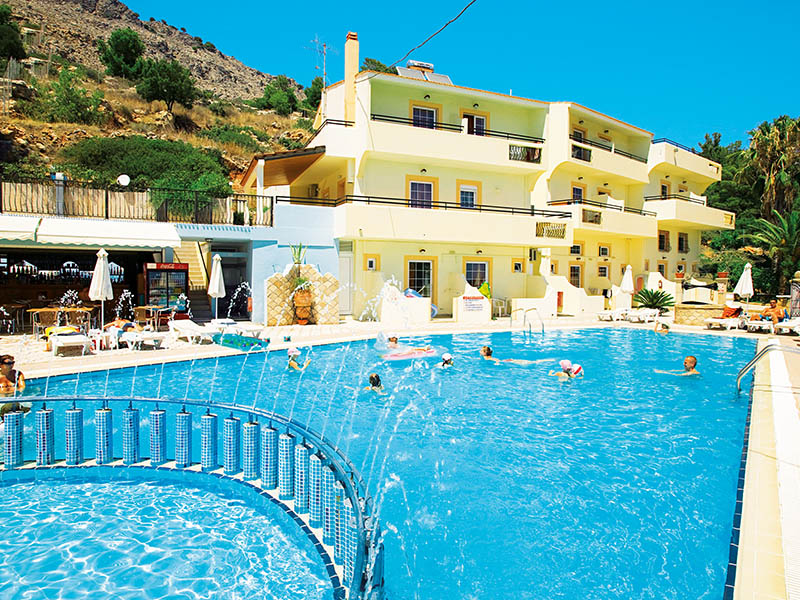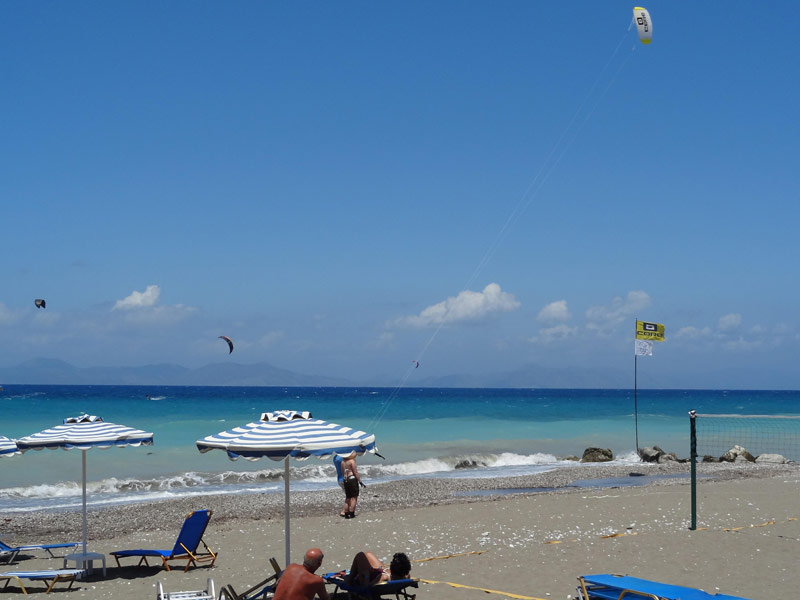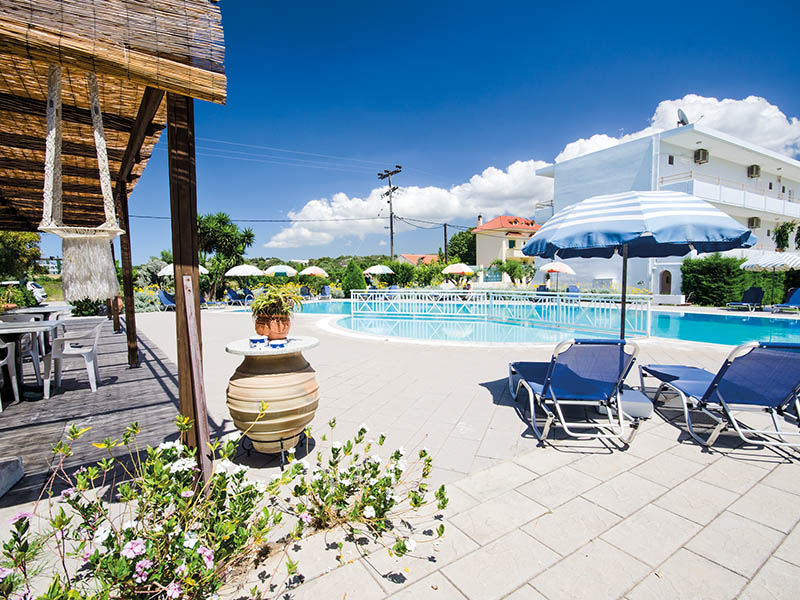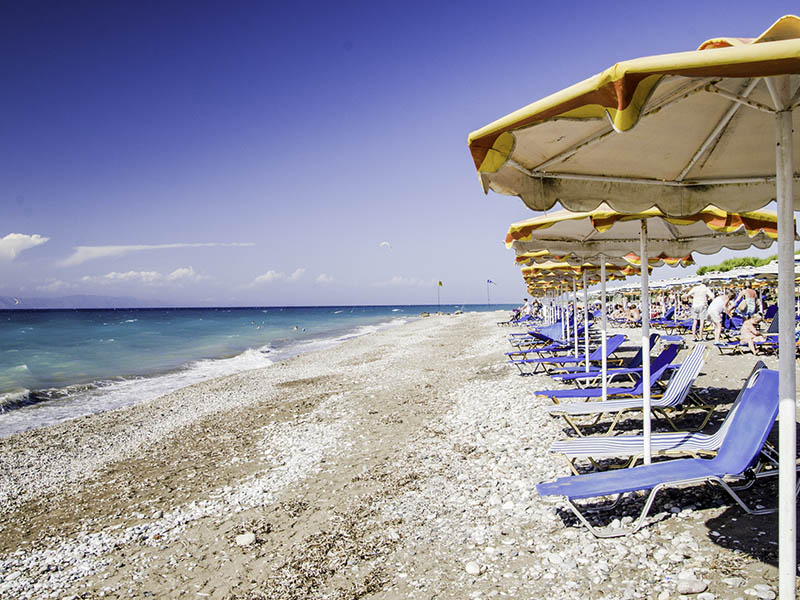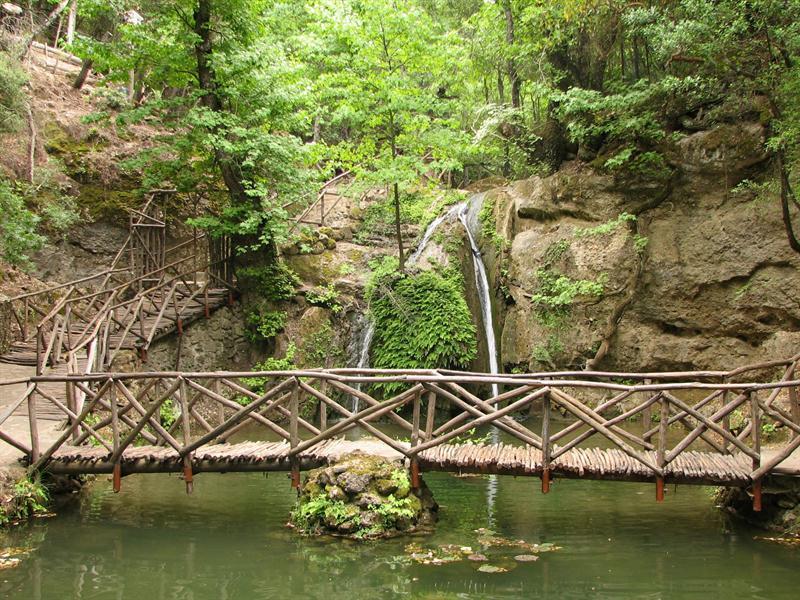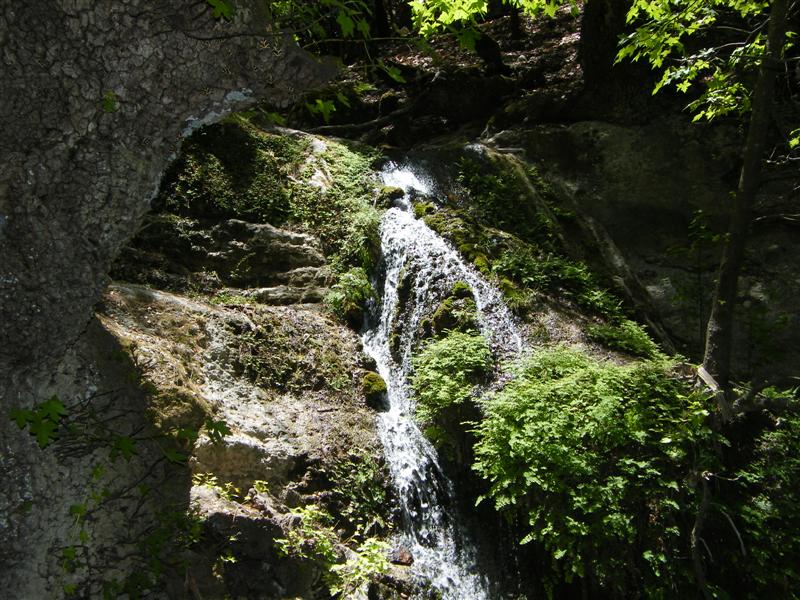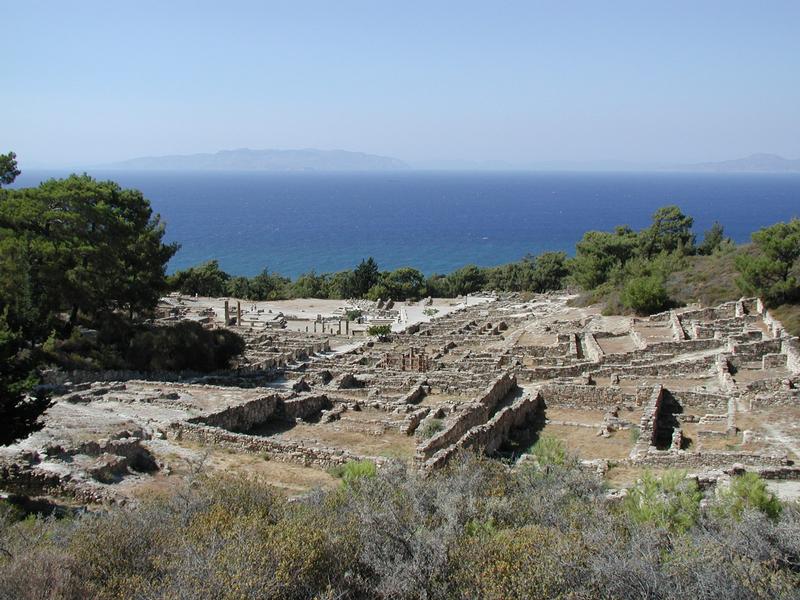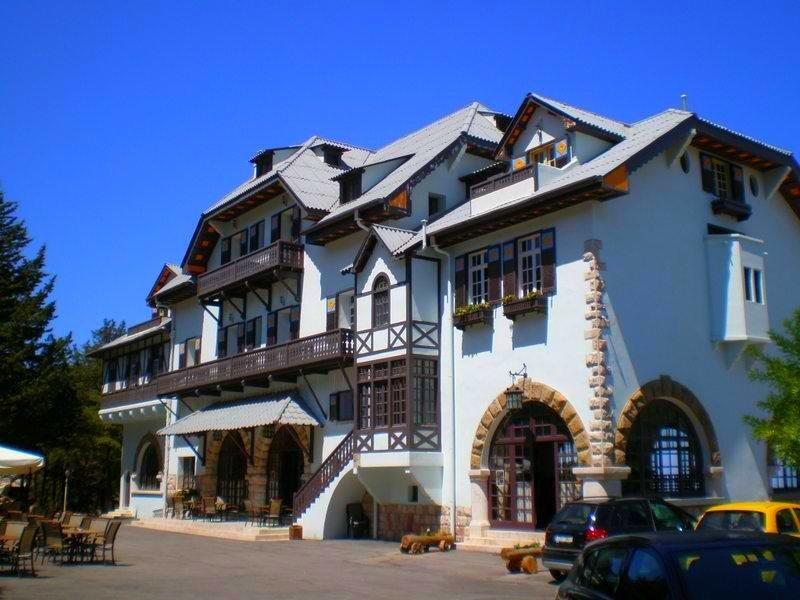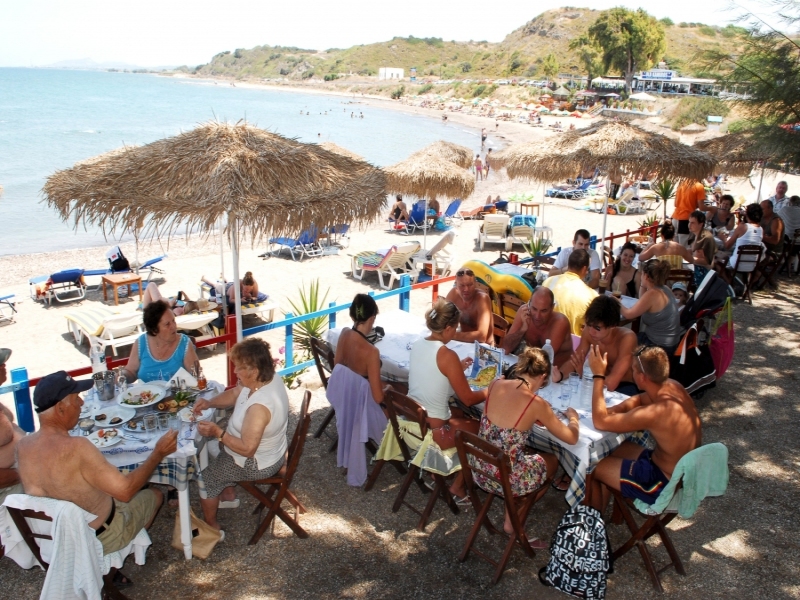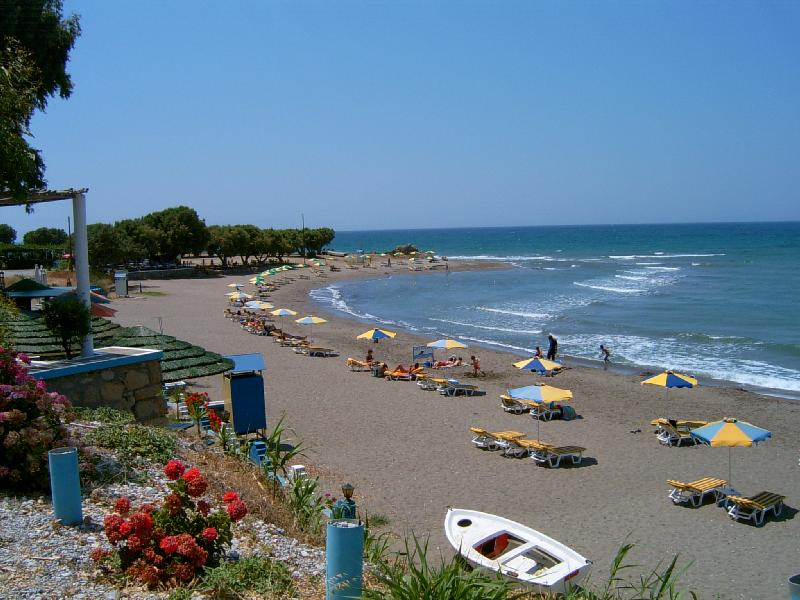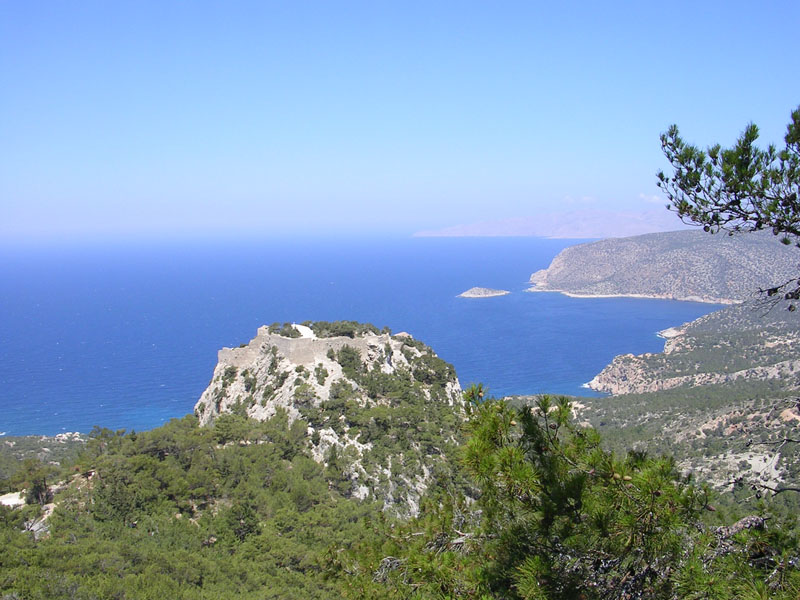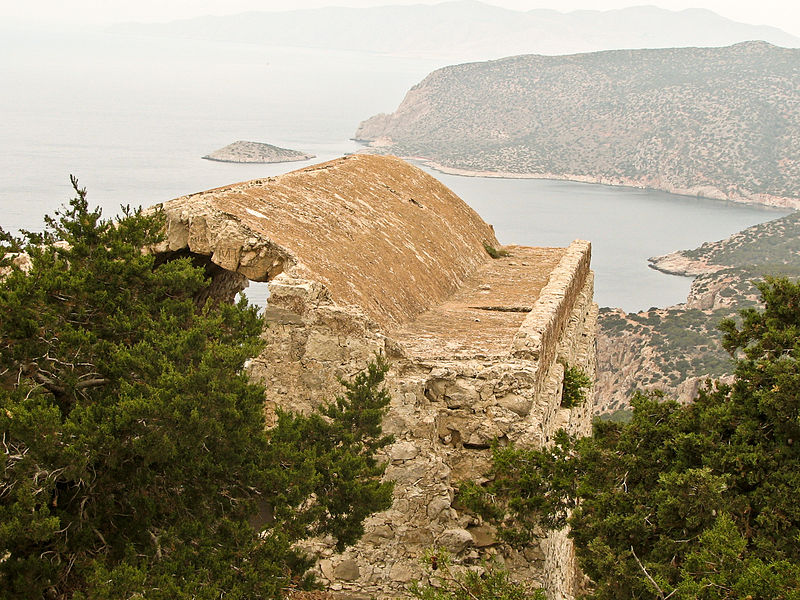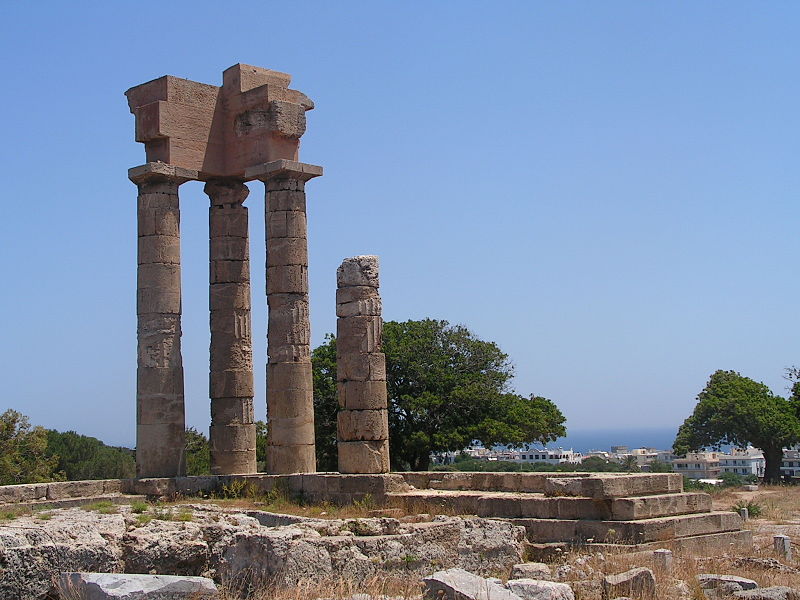
Introduction
The island of Rhodes is located at the crossroads of two major sea routes of the Mediterranean between the Aegean Sea and the coast of the Middle East, as well as Cyprus and Egypt. The meeting point of three continents, it has known many civilizations.
Throughout its long history the different people who settled on Rhodes left their mark in all aspects of the island's culture: art, language, architecture. Its strategic position brought to the island great wealth and made the city of Rhodes one of the leading cities of the ancient Greek world.
Rhodes is the largest island in the Dodecanese. Its capital city, located at its northern tip, is the capital of the Prefecture with the Medieval Town in its centre. In 1988 the Medieval Town was designated as a World Heritage City. The Medieval Town of Rhodes is the result of different architectures belonging to various historic eras, predominantly those of the Knights of St. John.
Antiquity
The island was inhabited in the Neolithic period, although little remains of this culture. In the 16th century BC, the Minoans came to Rhodes. Later Greek mythology recalled a Rhodian race called the Telchines, and associated the island of Rhodes with Danaus; it was sometimes nicknamed Telchinis. In the 15th century BC, Mycenaean Greeks invaded. After the Bronze Age collapse, the first renewed outside contacts were with Cyprus. In the 8th century BC, the island's settlements started to form, with the coming of the Dorians, who built the three important cities of Lindos, Ialyssos and Kameiros, which together with Kos, Cnidus and Halicarnassus (on the mainland) made up the so-called Dorian Hexapolis (Greek for six cities).
Before archaeology, myth stood in for blanks in the historical record. In Pindar's ode, the island was said to be born of the union of Helios the sun god and the nymph Rhode, and the cities were named for their three sons. The rhoda is a pink hibiscus native to the island. Diodorus Siculus added that Actis, one of the sons of Helios and Rhode, travelled to Egypt. He built the city of Heliopolis and taught the Egyptians the science of astrology. 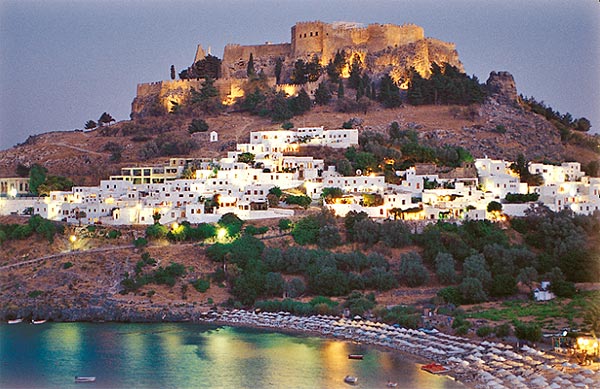
In the second half of the 8th century, the sanctuary of Athena received votive gifts that are markers for cultural contacts: small ivories from the Near East and bronze objects from Syria. At Kameiros on the northwest coast, a former Bronze Age site, where the temple was founded in the 8th century, there is another notable contemporaneous sequence of carved ivory figurines. Phoenician presence on the island at Ialysos is attested in traditions recorded much later by Rhodian historians.
The Persians invaded and overran the island, but were in turn defeated by forces from Athens in 478 BC. The cities joined the Athenian League. When the Peloponnesian War broke out in 431 BC, Rhodes remained largely neutral, although it remained a member of the League. The war lasted until 404 BC, but by this time Rhodes had withdrawn entirely from the conflict and decided to go her own way.
In 408 BC, the cities united to form one territory. They built the city of Rhodes, a new capital on the northern end of the island. Its regular plan was superintended by the Athenian architect Hippodamus. The Peloponnesian War had so weakened the entire Greek culture that it lay open to invasion. In 357 BC, the island was conquered by the king Mausolus of Caria, then it fell to the Persians in 340 BC. Their rule was also short. To the great relief of its citizens, Rhodes became a part of the growing empire of Alexander the Great in 332 BC, after he defeated the Persians.
Following the death of Alexander, his generals vied for control of the kingdom. Three: Ptolemy, Seleucus, and Antigonus, succeeded in dividing the kingdom among themselves. Rhodes formed strong commercial and cultural ties with the Ptolemies in Alexandria, and together formed the Rhodo-Egyptian alliance that controlled trade throughout the Aegean in the 3rd century BC.
The city developed into a maritime, commercial and cultural center; its coins circulated nearly everywhere in the Mediterranean. Its famous schools of philosophy, science, literature and rhetoric shared masters with Alexandria: the Athenian rhetorician Aeschines, who formed a school at Rhodes; Apollonius of Rhodes; the observations and works of the astronomers Hipparchus and Geminus, the rhetorician Dionysios Trax. Its school of sculptors developed a rich, dramatic style that can be characterized as "Hellenistic Baroque".
In 305 BC, Antigonus directed his son, Demetrius, to besiege Rhodes in an attempt to break its alliance with Egypt. Demetrius created huge siege engines, including a 180 ft (55 m) battering ram and a siege tower named Helepolis that weighed 360,000 pounds (163,293 kg). Despite this engagement, in 304 BC after only one year, he relented and signed a peace agreement, leaving behind a huge store of military equipment. The Rhodians sold the equipment and used the money to erect a statue of their sun god, Helios, the statue since called the Colossus of Rhodes.
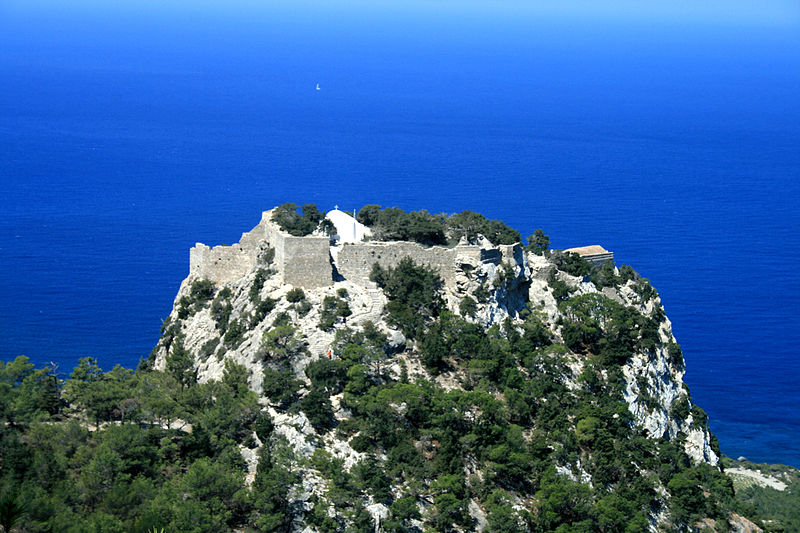
Rhodes strategic goals throughout the 3rd century were to secure her independence and her commerce, most especially her virtual control over the grain trade in the eastern Mediterranean. Both of these goals were dependent upon no one of the three great Hellenistic states achieving dominance, and consequently the Rhodians pursued a policy of maintaining a balance of power among the Antigonids, Seleucids and Ptolemies, even if that meant going to war with her traditional ally, Egypt. To this end they employed as leverage their economy and their excellent navy, which was manned by proverbially the finest sailors in the Mediterranean world: “If we have ten Rhodians, we have ten ships.”
Rhodes successfully carried on this policy through the course of the 3rd century, an impressive achievement for what was essentially a democratic state. By the end of that period, however, the balance of power was crumbling, as declining Ptolemaic power made Egypt an attractive target for Seleucid ambitions. In the 203/2 the young and dynamic kings of Antigonid Macedon and Seleucid Asia, Philip V and Antiochus III, agreed to accept – at least temporarily - one another’s military plans, Philip’s campaign in the Aegean and western Anatolia and Antiochus’ final solution of the Egyptian question. Heading a coalition of small states that checked Philip’s navy but not his superior army and now without a third power to which to turn, the Rhodians appealed in 201 to the newest world power, Rome.
Despite being exhausted by the titanic struggle against Hannibal (218-201) the Romans agreed to intervene, having already been stabbed in the back by Philip during the war against Carthage. The Senate saw the appeal from Rhodes and her allies as the opportunity to pressure Philip, perhaps into submission but more likely war, and to do so with ready naval allies and under an excellent PR banner: “Freedom for the Greeks!” The result was the Second Macedonian War (200-196), which ended Macedon’s role as a major player and preserved Rhodian independence.
The Romans actually withdrew from the Balkan Peninsula, but the resulting power vacuum quickly drew in Antiochus and subsequently the Romans, who easily polished off (192-188) the last Mediterranean power that might even vaguely threaten the city on the Tiber. In essence the Roman Empire was completed. Having provided Rome with valuable naval help in her first foray into Asia, the Rhodians were rewarded with territory and enhanced status. The Romans once again evacuated the east – the Senate preferred clients to provinces – but it was clear that Rome now ruled the world and Rhodian autonomy was ultimately dependent upon good relations with them.
And those good graces soon evaporated in the wake of the Third Macedonian War (171-168). Rhodes remained scrupulously neutral during the war, but in the view of hostile elements in the Senate she had been a bit too friendly with the defeated King Perseus. Some actually proposed declaring war on the island republic, but this was averted. In 164, Rhodes became a permanent ally of Rome, ending an independence that no longer had any meaning. It was said that the Romans ultimately turned against the Rhodians because the islanders were the only people they had encountered who were more arrogant than themselves.
After surrendering its independence Rhodes became a cultural and educational center for Roman noble families and was especially noted for its teachers of rhetoric, such as Hermagoras and the unknown author of Rhetorica ad Herennium. At first, the state was an important ally of Rome and enjoyed numerous privileges, but these were later lost in various machinations of Roman politics. Cassius eventually invaded the island and sacked the city. In the early Empire Rhodes became a favorite place for political exiles.
Woodcut engraving depicting the Byzantine city of Rhodes by Hartmann Schedel (1493)
Mortar of the Knights of Saint John of Jerusalem (Knights Hospitaller), Rhodes, 1480–1500, fired 260 lb (118 kg) cannon balls.
In the 1st century AD, the Emperor Tiberius spent a brief term of exile on Rhodes. Saint Paul brought Christianity to people on the island. Rhodes reached her zenith in the 3rd century.
Medieval period
In 395, the long Byzantine period began for Rhodes, when the eastern half of the Roman empire became gradually more Greek.
Beginning after 600 AD, its influence in maritime issues was manifested in the collection of maritime law known as "Rhodian Sea Law" (Nomos Rhodion Nautikos), accepted throughout the Mediterranean and in use throughout Byzantine times (and influencing the development of admiralty law up to the present).
Rhodes was occupied by the Islamic Umayyad forces of Muawiyah I in 654, who carried off the remains of the Colossus of Rhodes. The island was captured by the Arabs before 674 as part of their attack on Constantinople. When their fleet was destroyed by storms and Greek fire, the island was evacuated. In 715 the Byzantine fleet launched a rebellion at Rhodes, which led to the installation of Theodosios III on the Byzantine throne.
From the early 8th to the 12th centuries, Rhodes belonged to the Cibyrrhaeot Theme of the Byzantine Empire, and a center for shipbuilding and commerce. In circa 1090, it was occupied by the Muslim forces of the Seljuk Turks, not long after the Battle of Manzikert. Rhodes was recaptured by the Emperor Alexios I Komnenos during the First Crusade.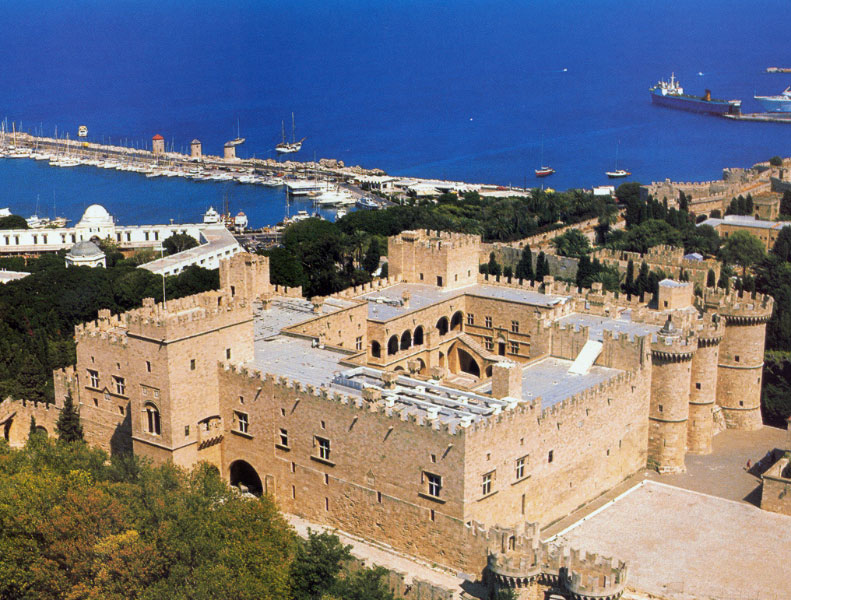
As Byzantine central power weakened under the Angeloi emperors, in the first half of the 13th century, Rhodes became the center of an independent domain under Leo Gabalas and his brother John, until it was occupied by the Genoese in 1248–1250. The Genoese were evicted by the Empire of Nicaea, after which the island became a regular province of the Nicaean state (and later of the restored Byzantine Empire).
In 1309, the Byzantine era came to an end when the island was occupied by forces of the Knights Hospitaller. Under the rule of the newly named "Knights of Rhodes", the city was rebuilt into a model of the European medieval ideal. Many of the city's famous monuments, including the Palace of the Grand Master, were built during this period.
The strong walls which the Knights had built withstood the attacks of the Sultan of Egypt in 1444, and a siege by the Ottomans under Mehmed II in 1480. Eventually, however, Rhodes fell to the large army of Suleiman the Magnificent in December 1522. The few surviving Knights were permitted to retire to the Kingdom of Sicily, from where they would later move their base of operations to Malta. Rhodes was thereafter a possession of the Ottoman Empire for nearly four centuries.
Modern history
The island was populated by ethnic groups from the surrounding nations, including Jews. Under Ottoman rule, they generally did fairly well, but discrimination and bigotry occasionally arose. In February 1840, the Jews of Rhodes were falsely accused of ritually murdering a Christian boy. This became known as the Rhodes blood libel.
In 1912, Italy seized Rhodes from the Turks during the Italo-Turkish War. The island's population thus bypassed many of the events associated with the "exchange of the minorities" between Greece and Turkey. Due to the Treaty of Lausanne, the island, together with the rest of the Dodecanese, was officially assigned to Italy. It became the core of their possession of the Isole Italiane dell'Egeo.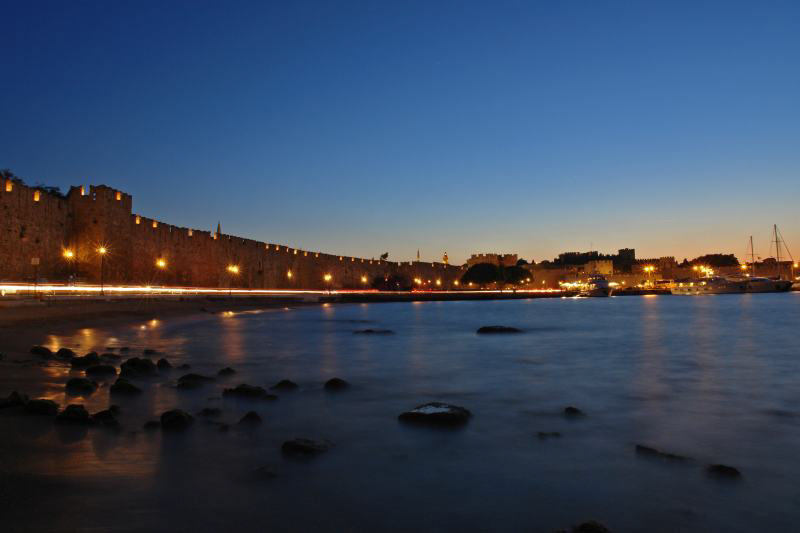
Following the Italian Armistice of 8 September 1943, the British attempted to get the Italian garrison on Rhodes to change sides. This was anticipated by the German Army, which succeeded in occupying the island. In great measure, the German occupation caused the British failure in the subsequent Dodecanese Campaign.
On 19 July 1944, the Gestapo rounded up the island's nearly 2,000 Jewish inhabitants to send them to extermination camps. About 160 of the island's more than 600 Greek Jews survived. The Turkish Consul Selahattin Ülkümen succeeded, at considerable risk to himself and his family, in saving 42 Jewish families, about 200 persons in total, who had Turkish citizenship or were members of Turkish citizens' families.
In 1947, together with the other islands of the Dodecanese, Rhodes was united with Greece.
In 1949, Rhodes was the venue for negotiations between Israel and Egypt, Jordan, Lebanon, and Syria, concluding with the 1949 Armistice Agreements.

